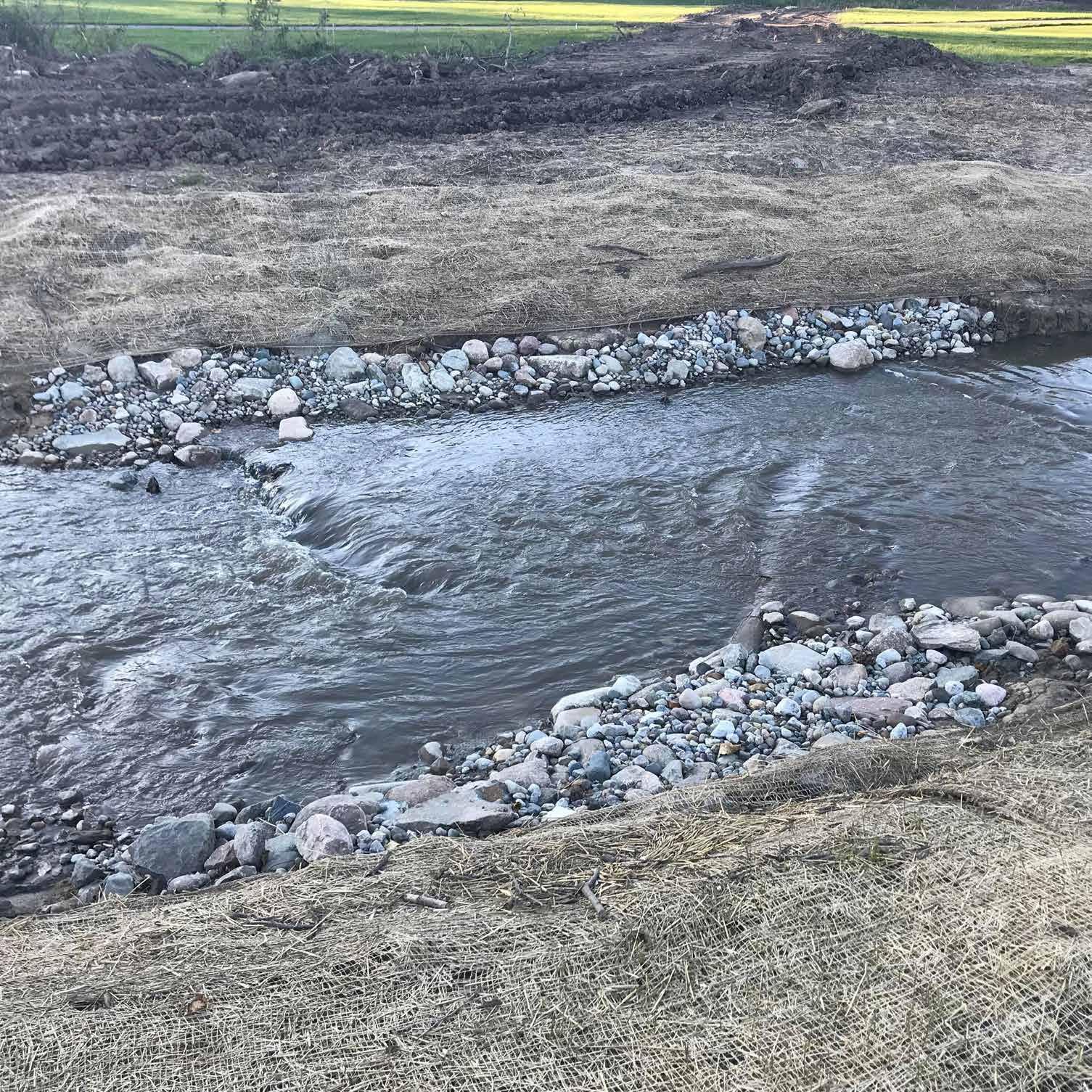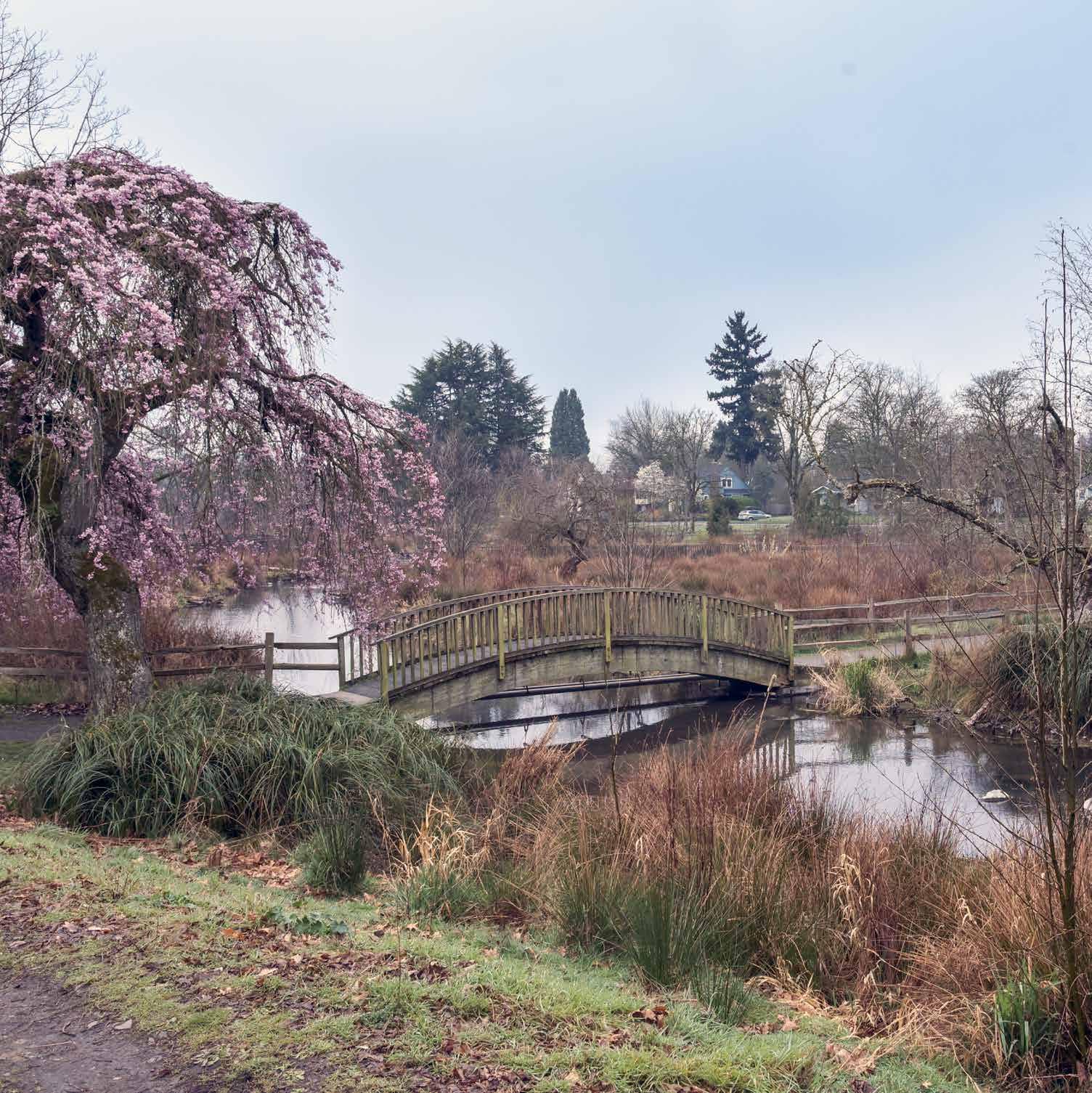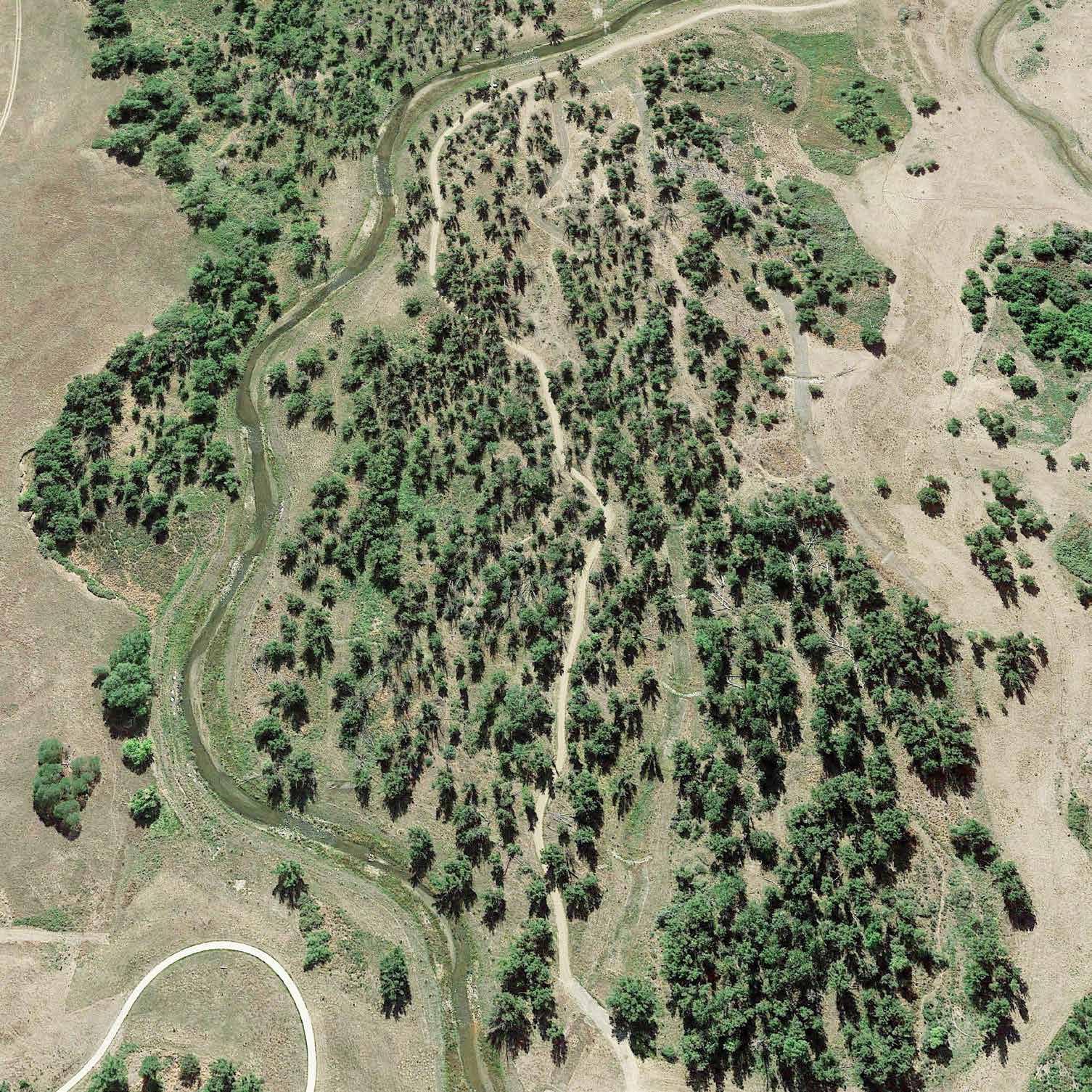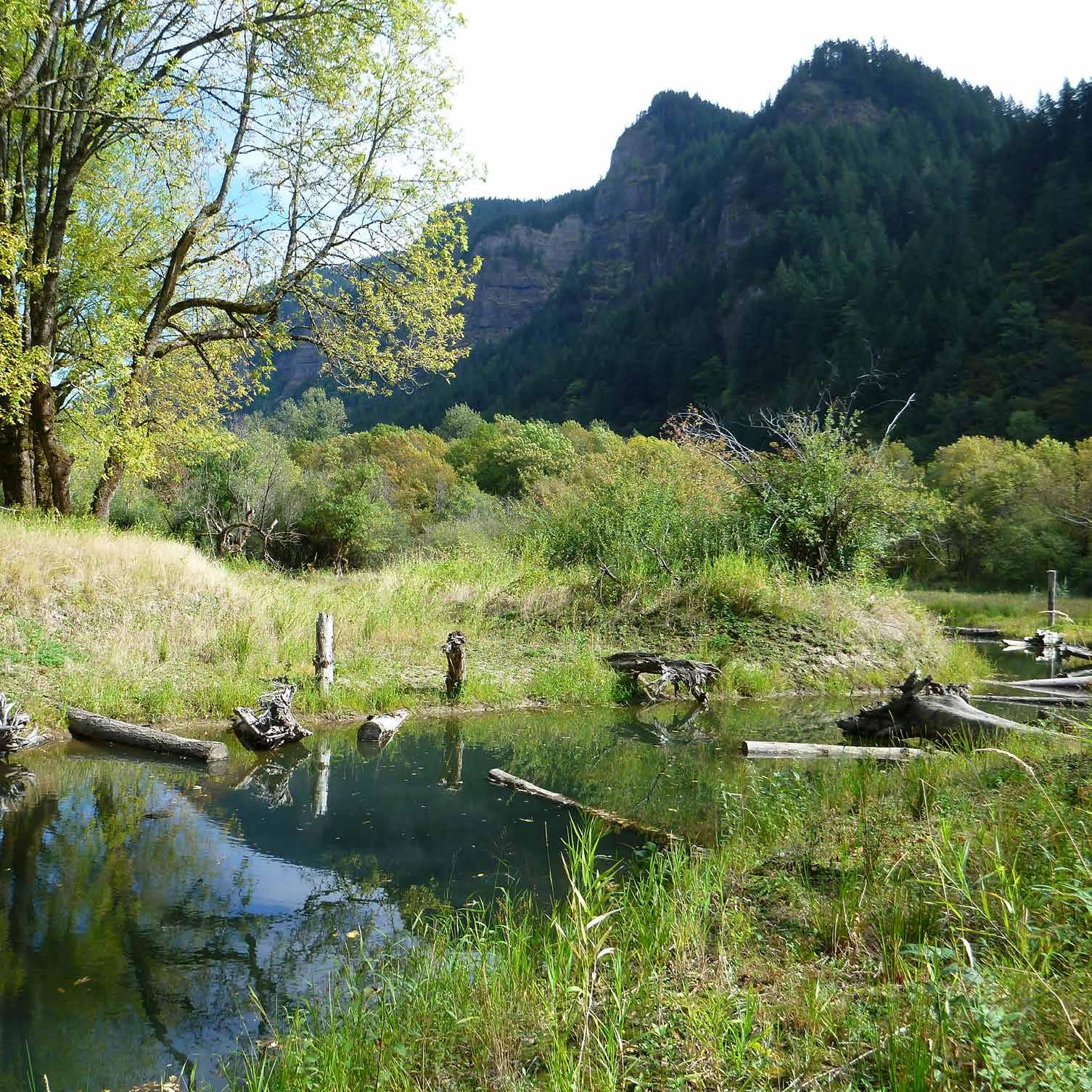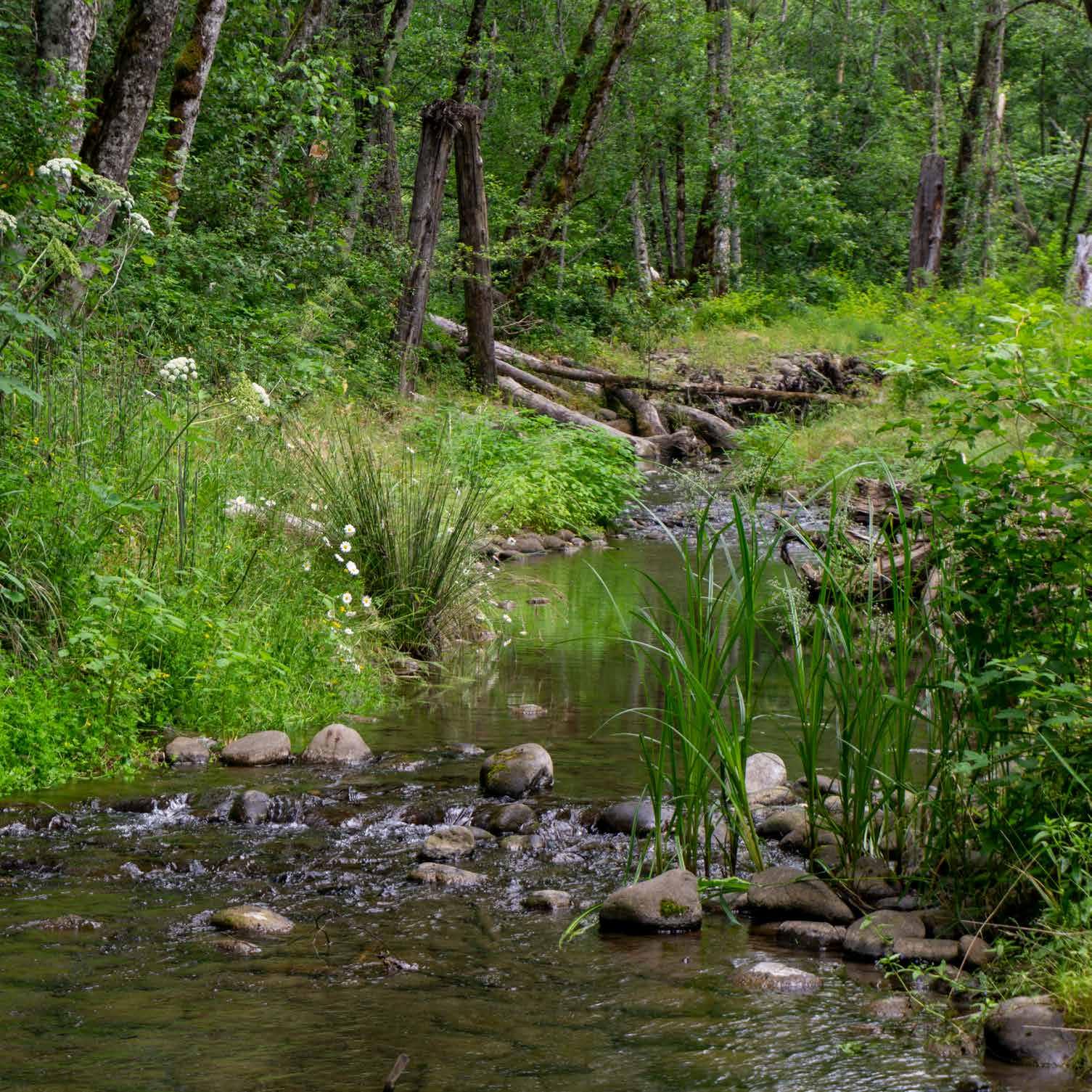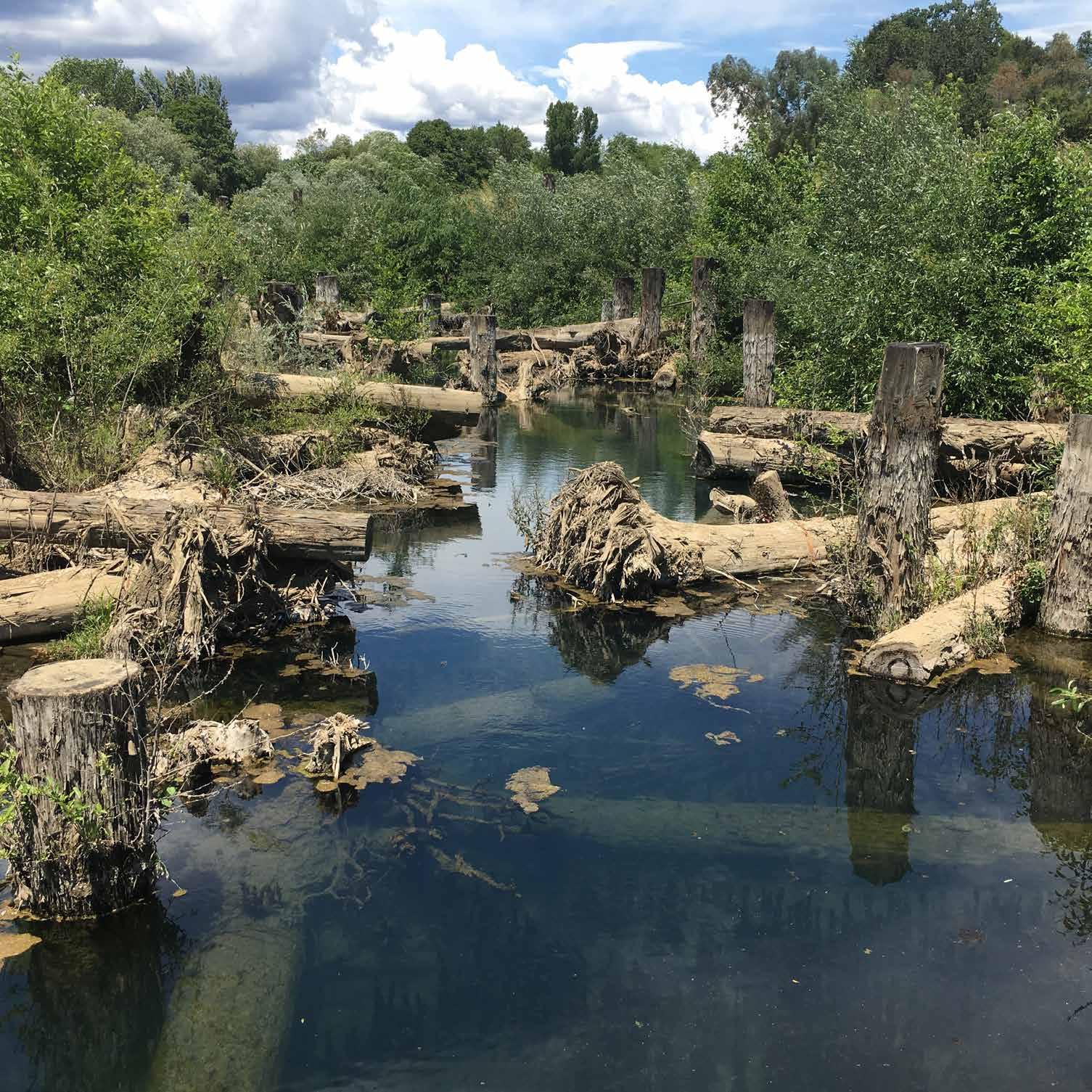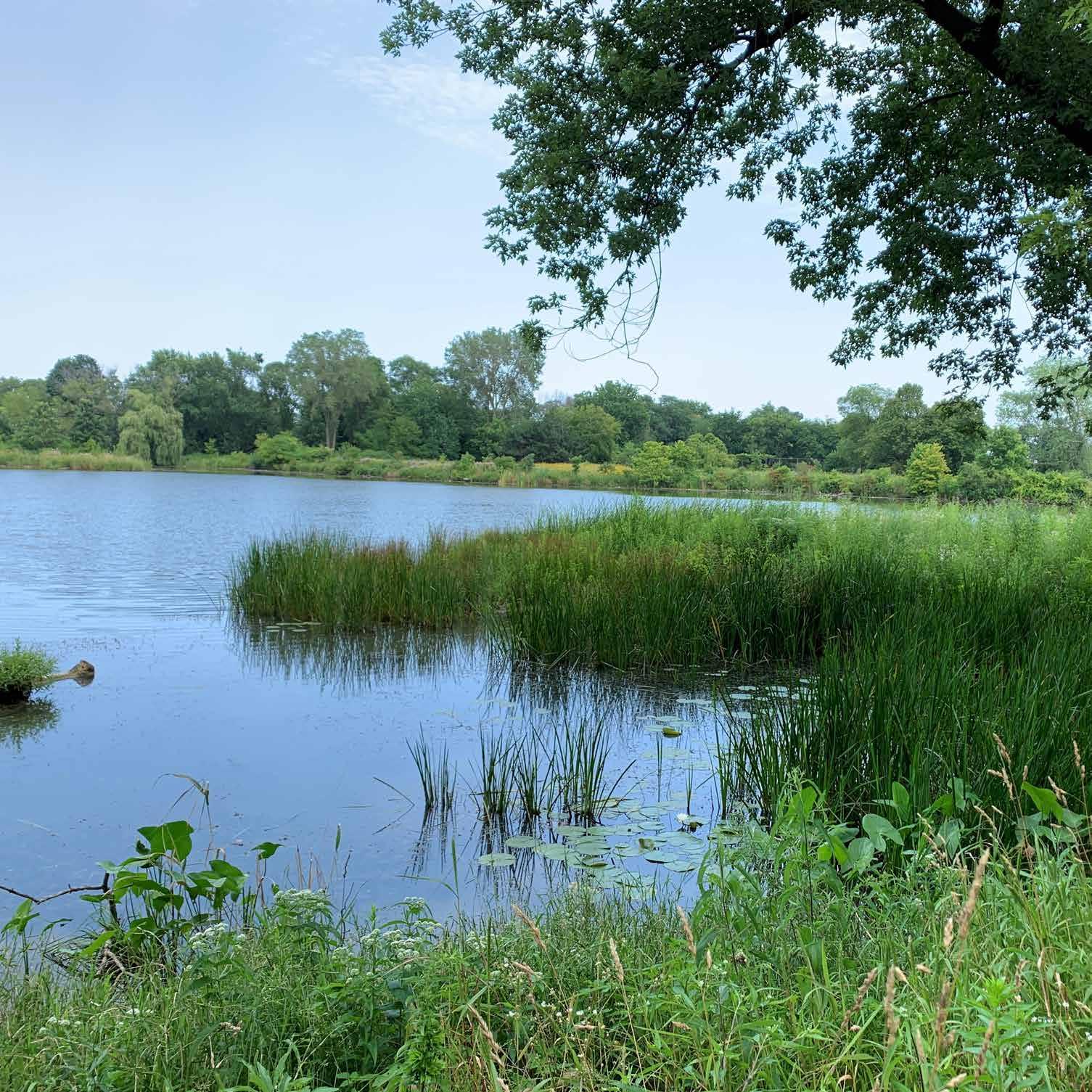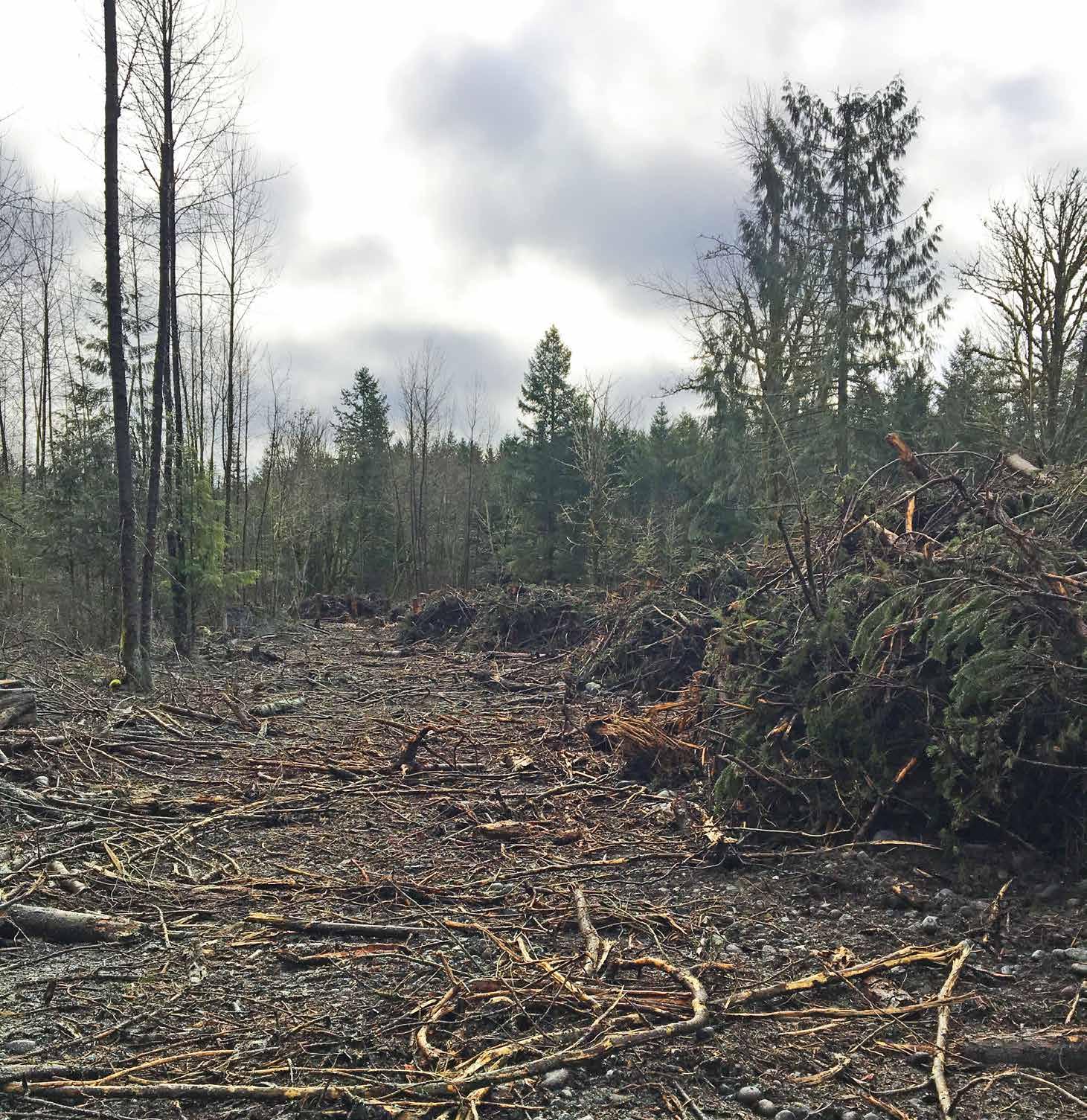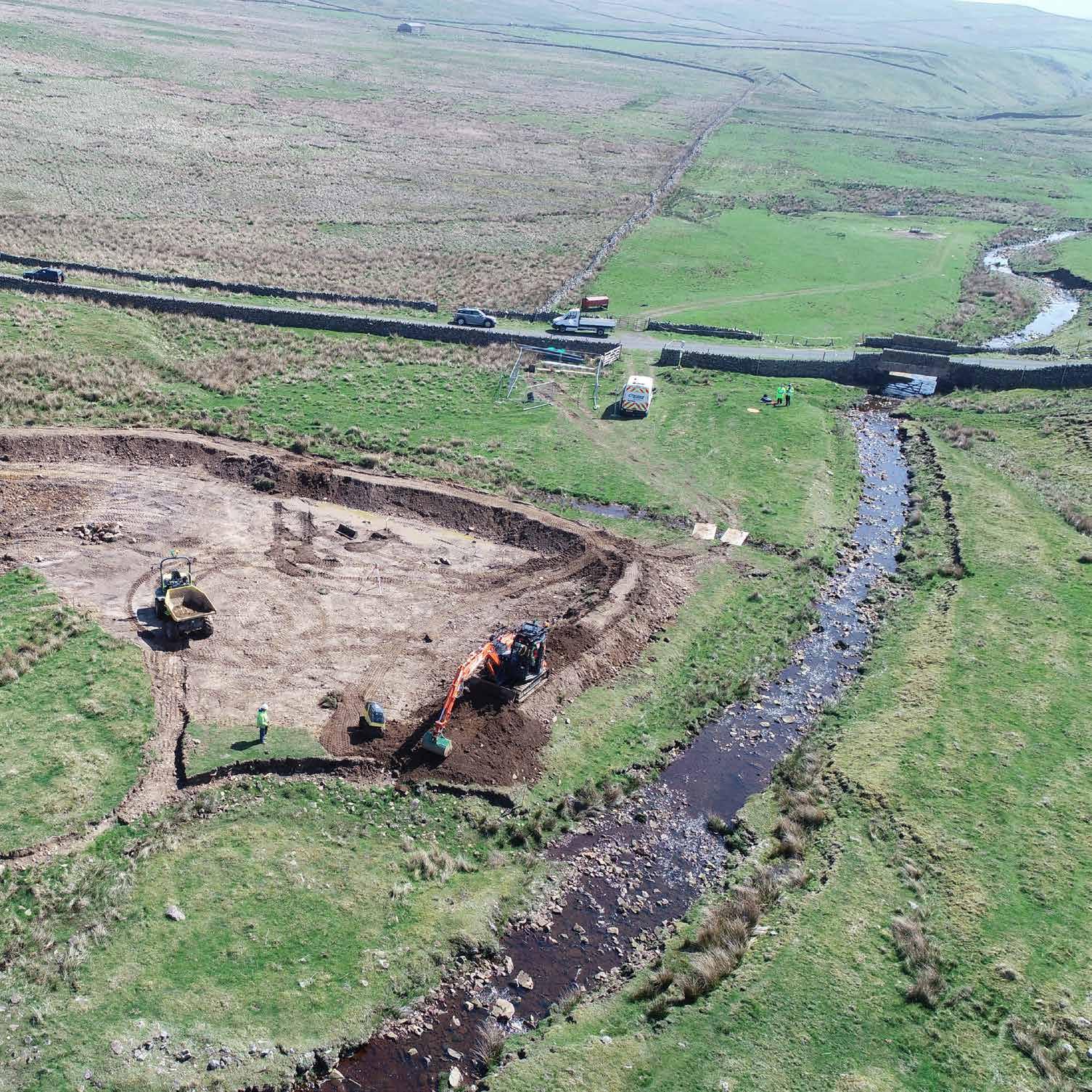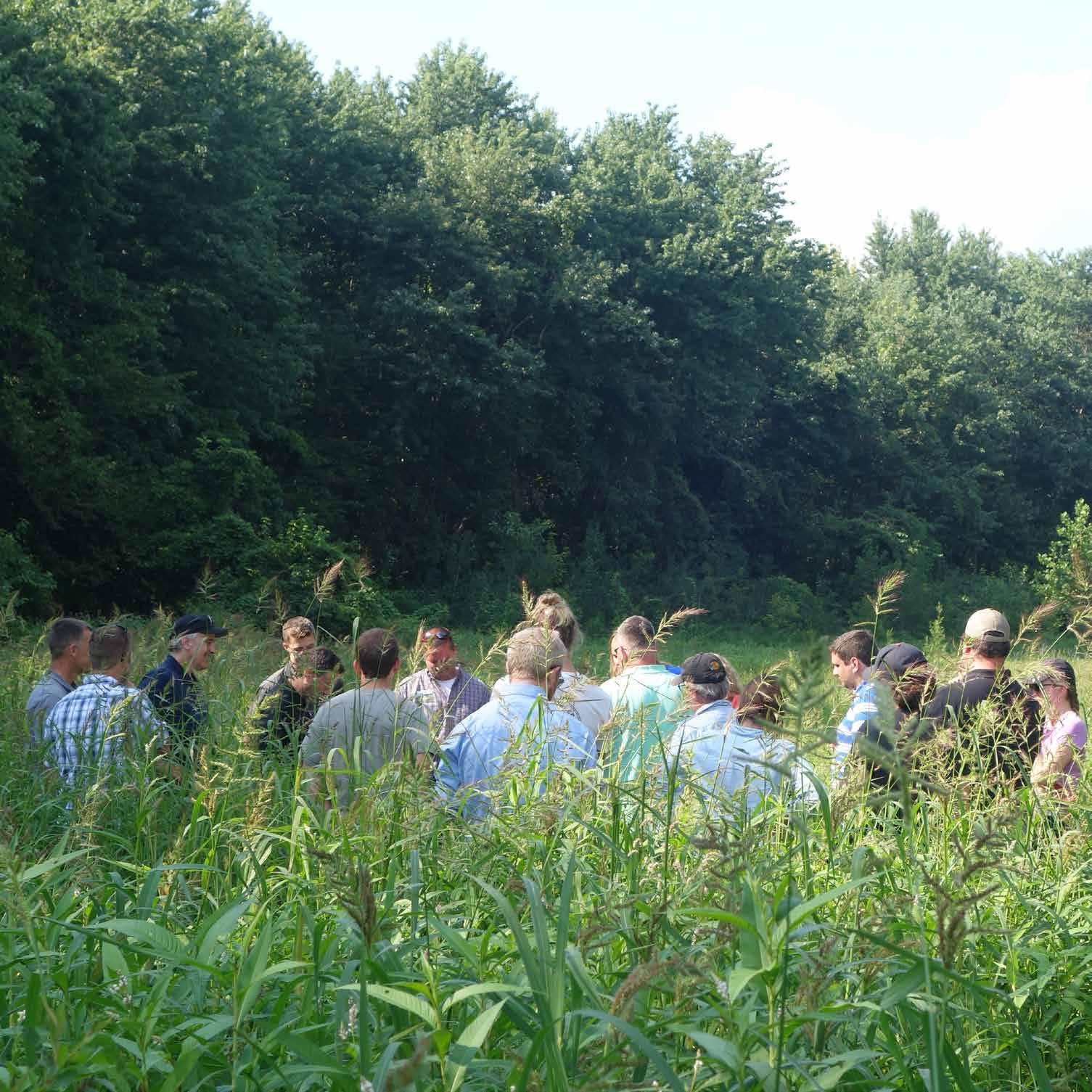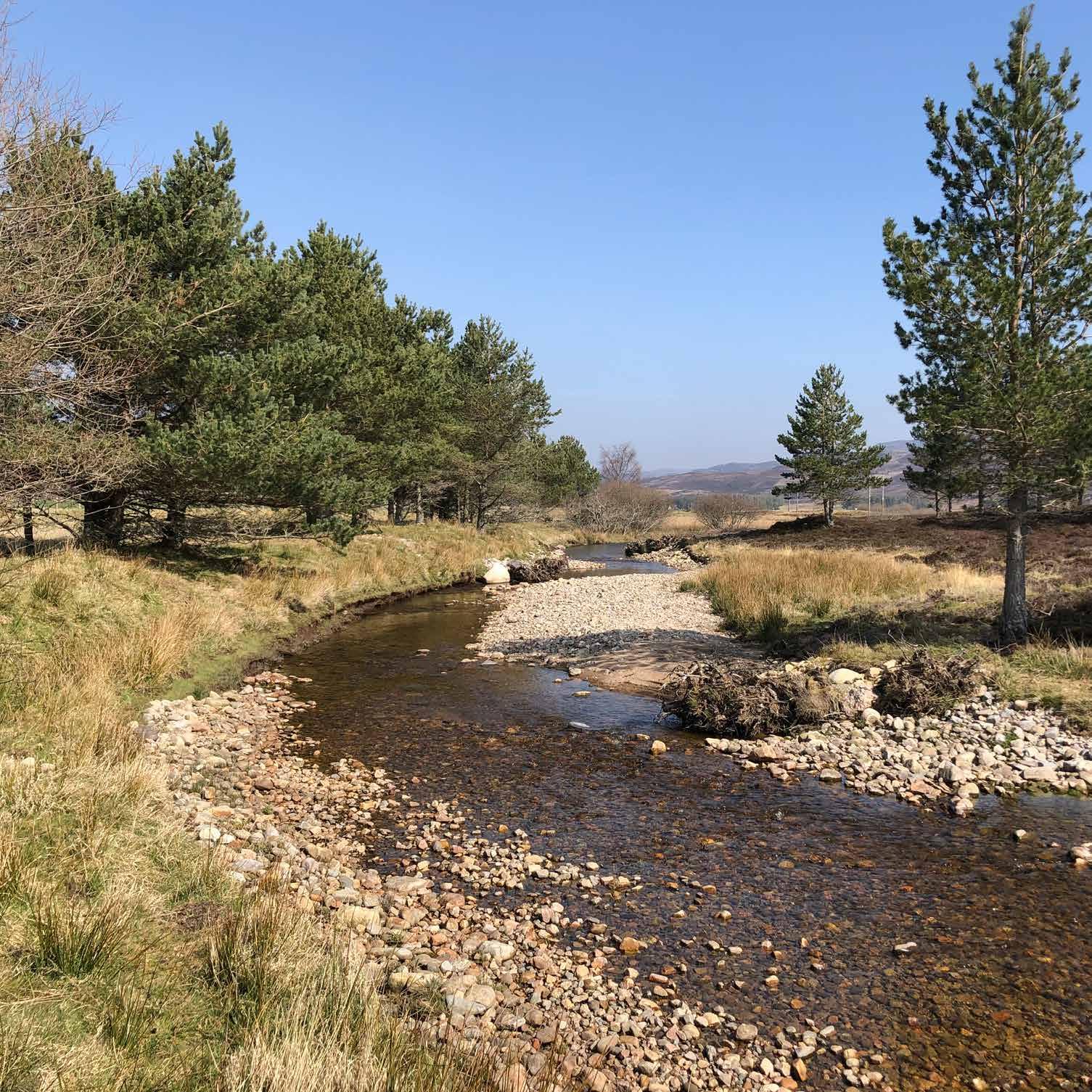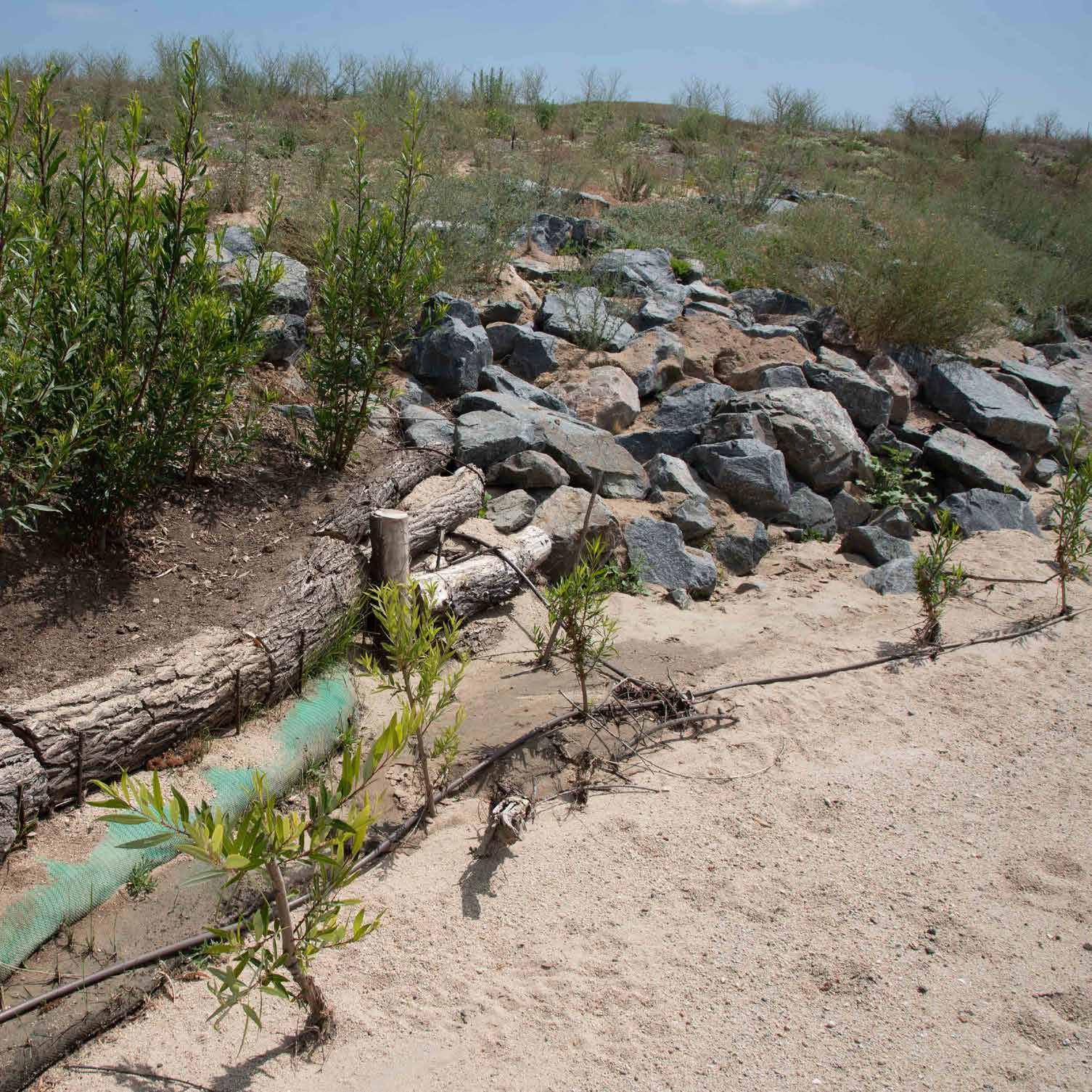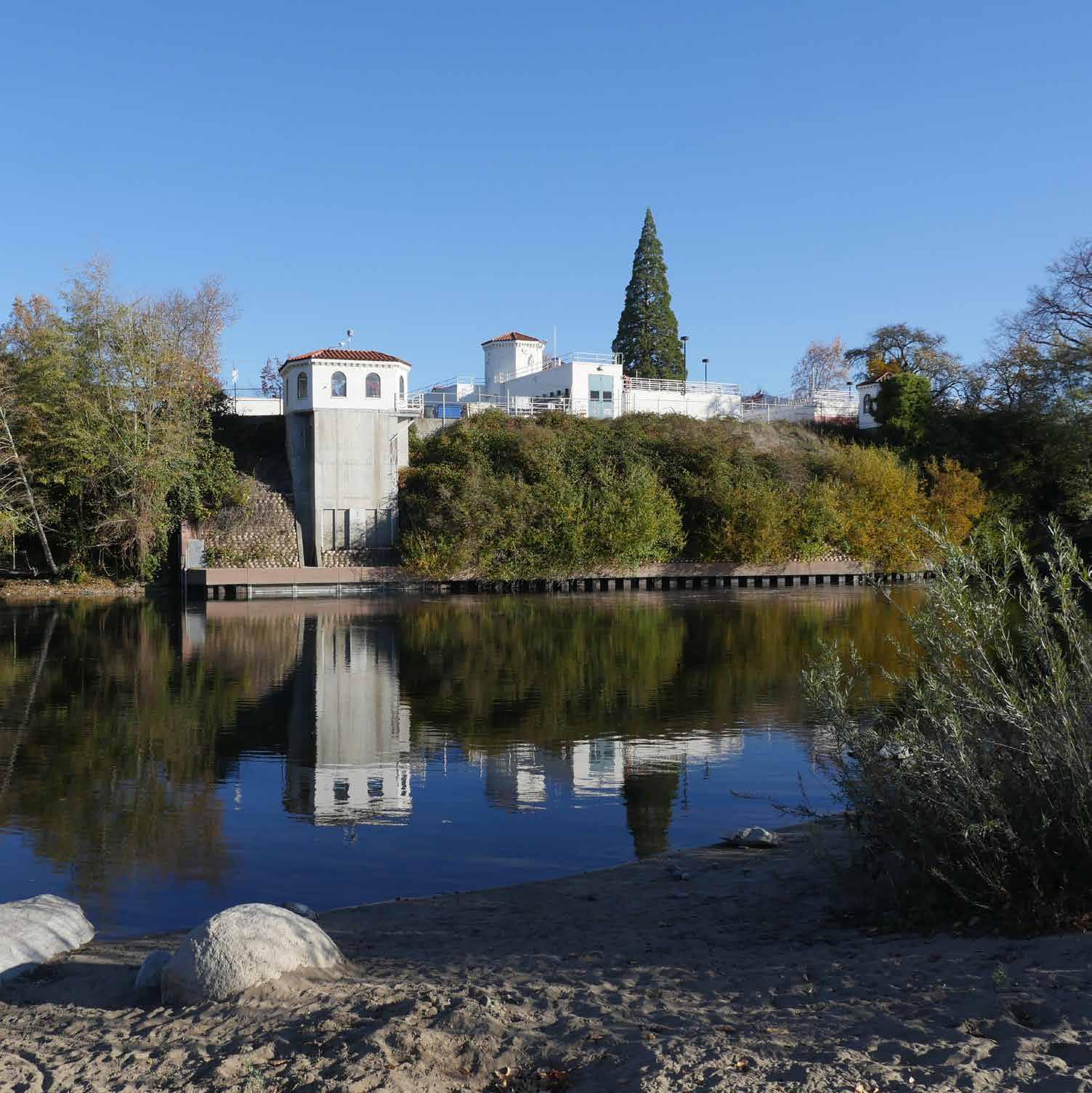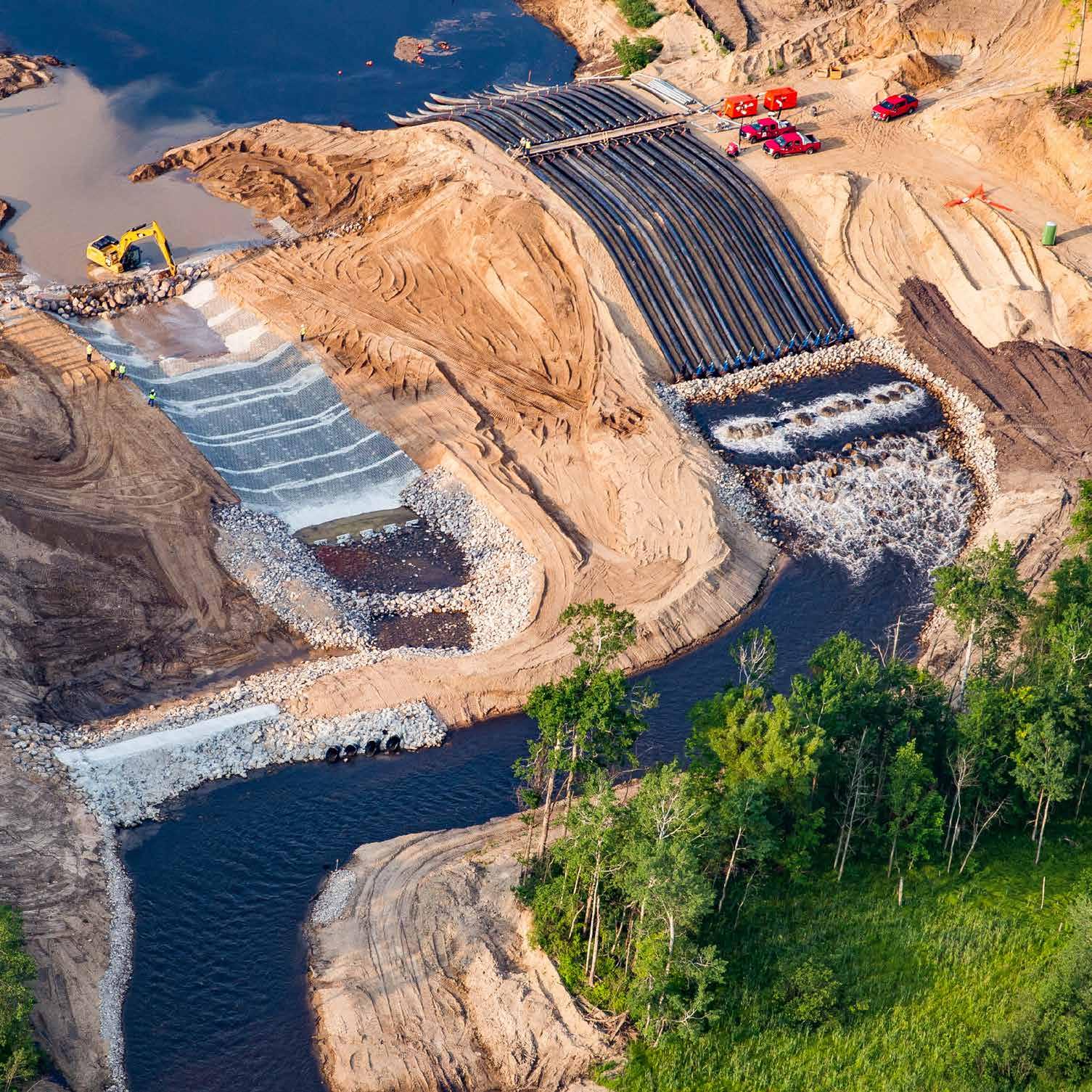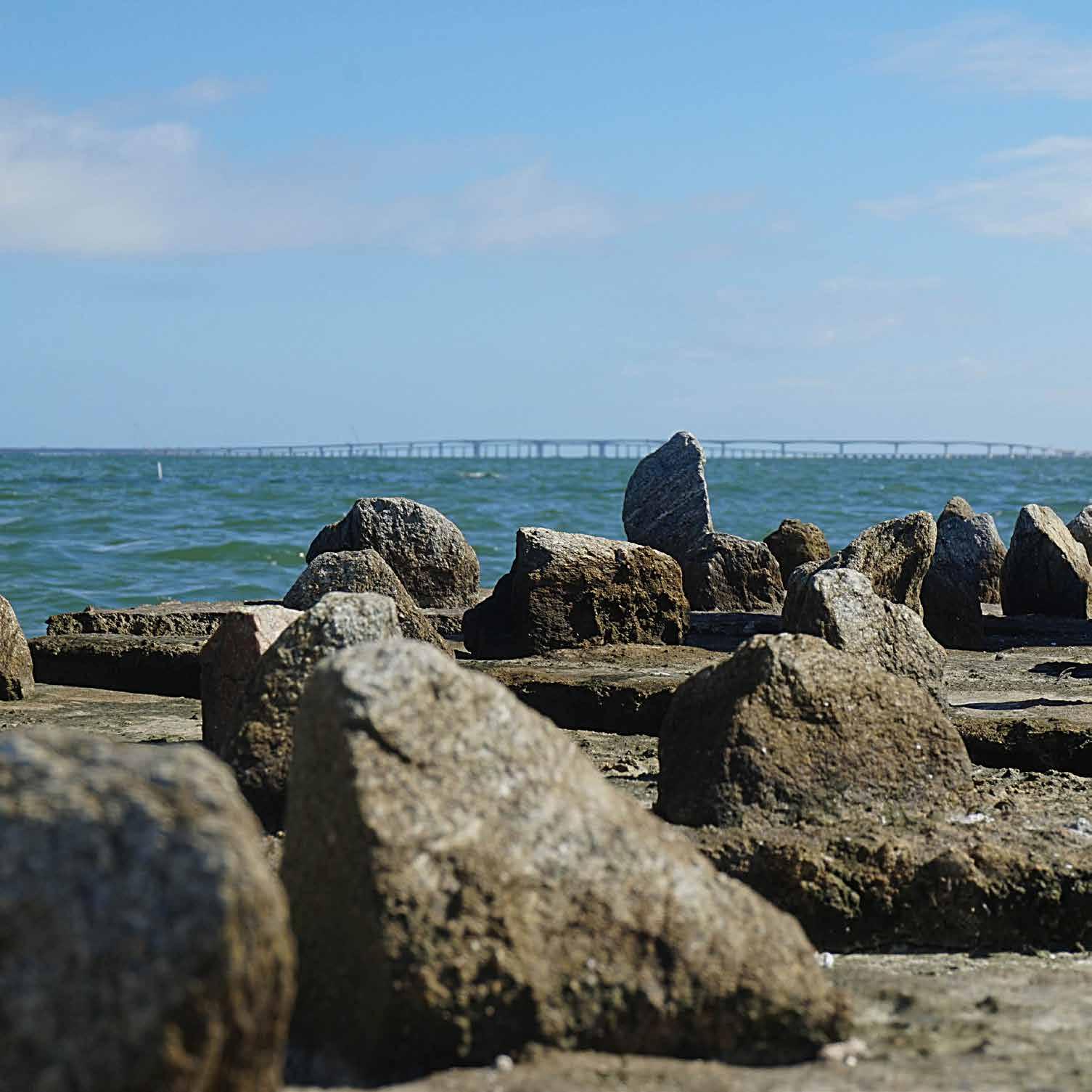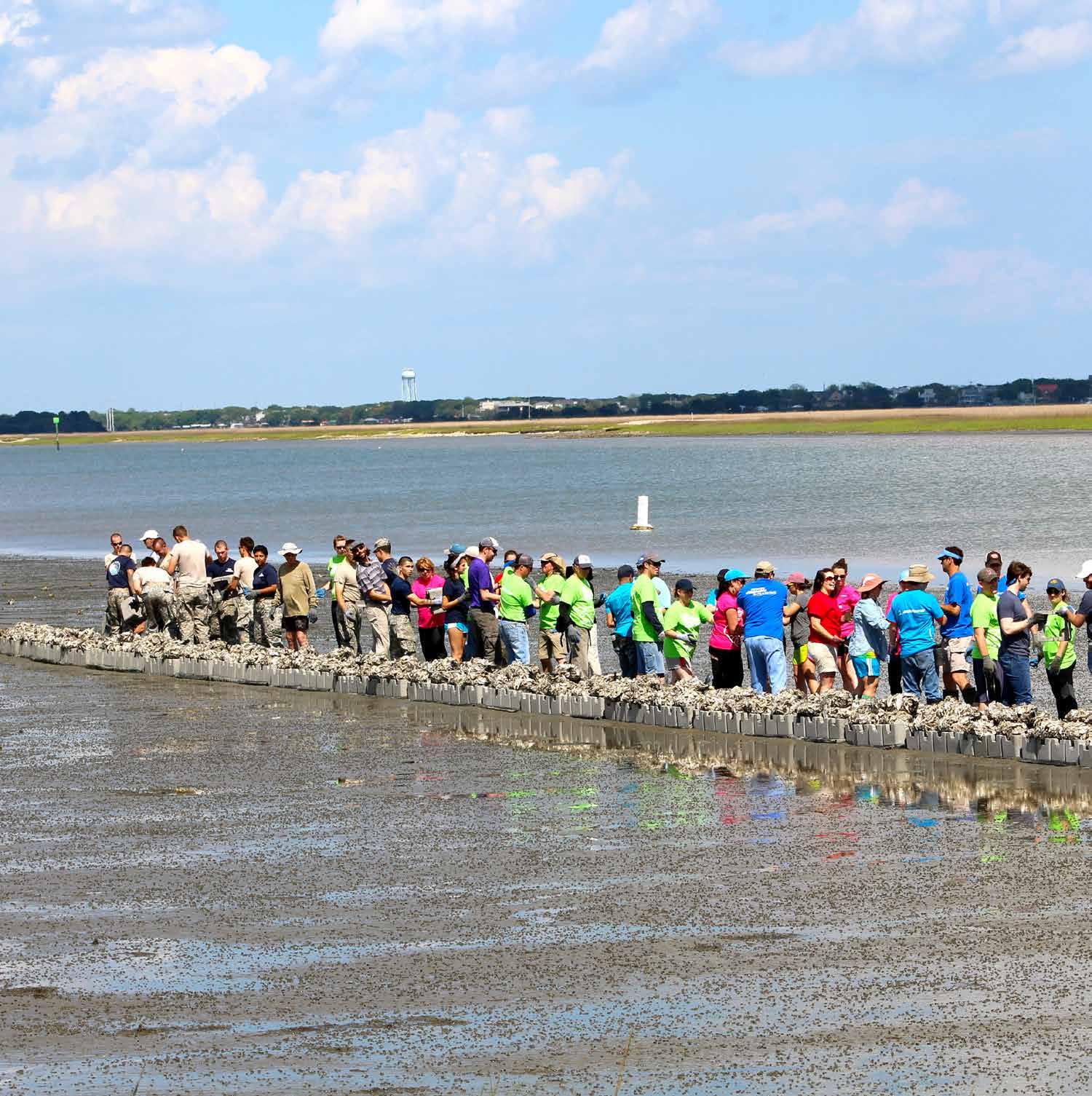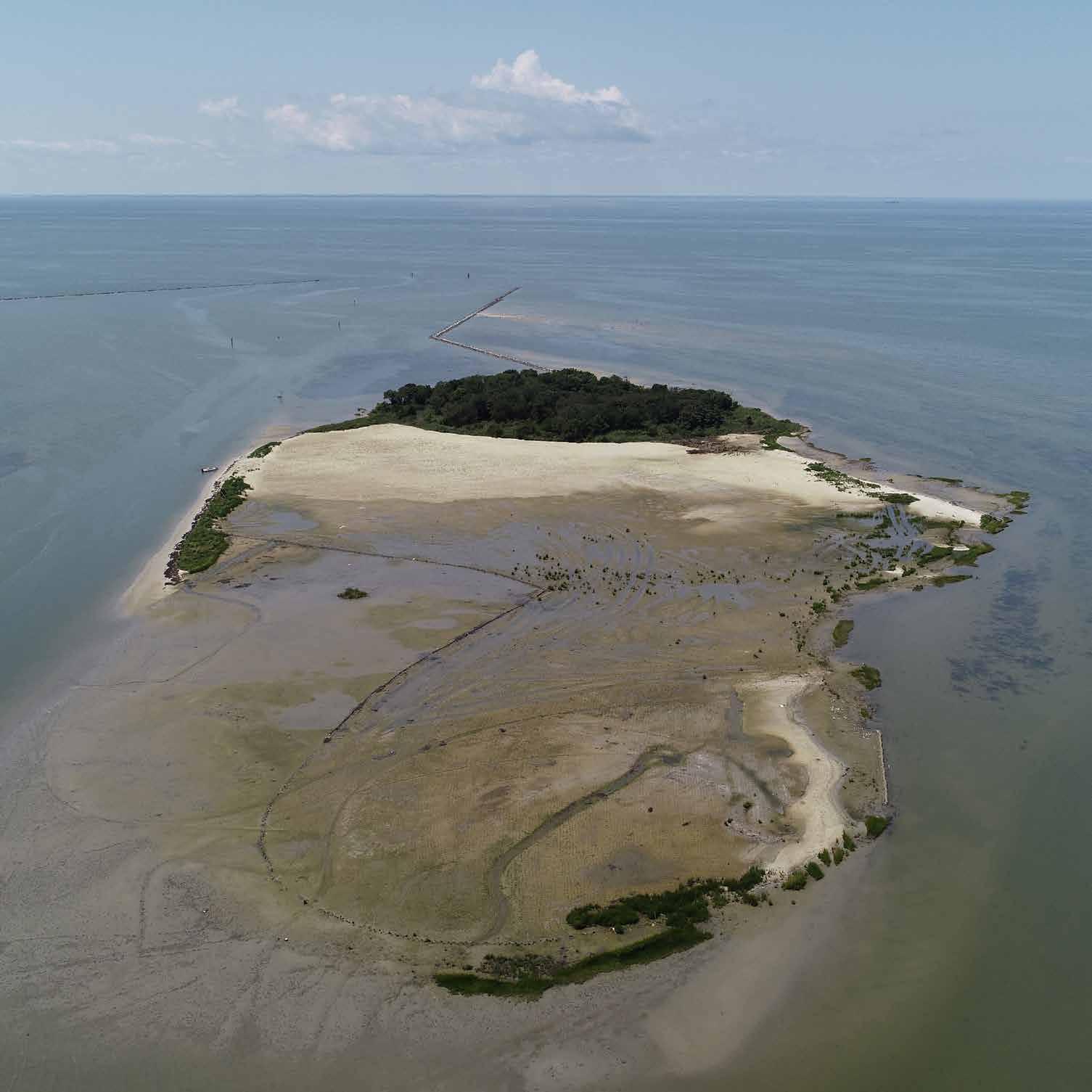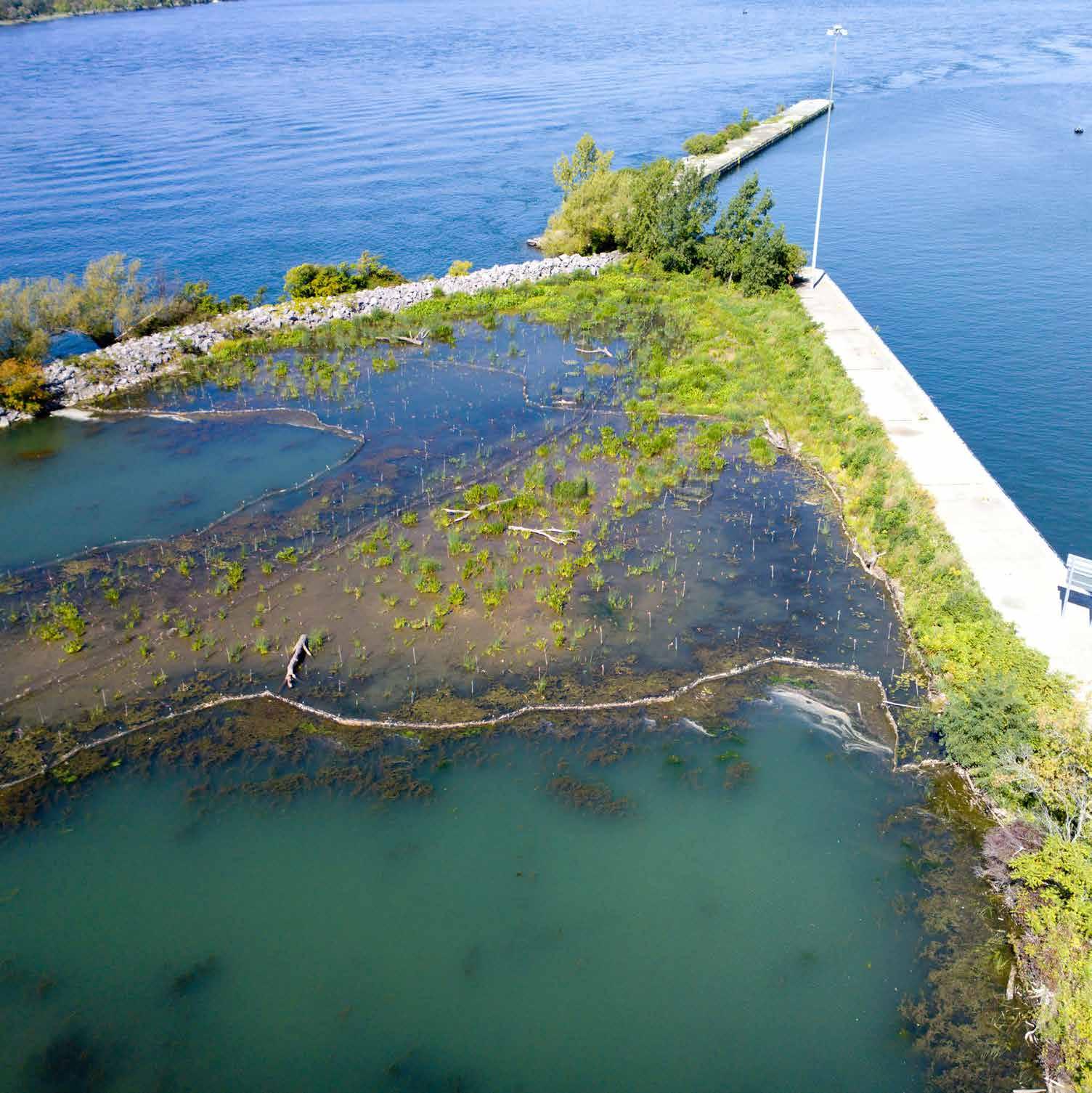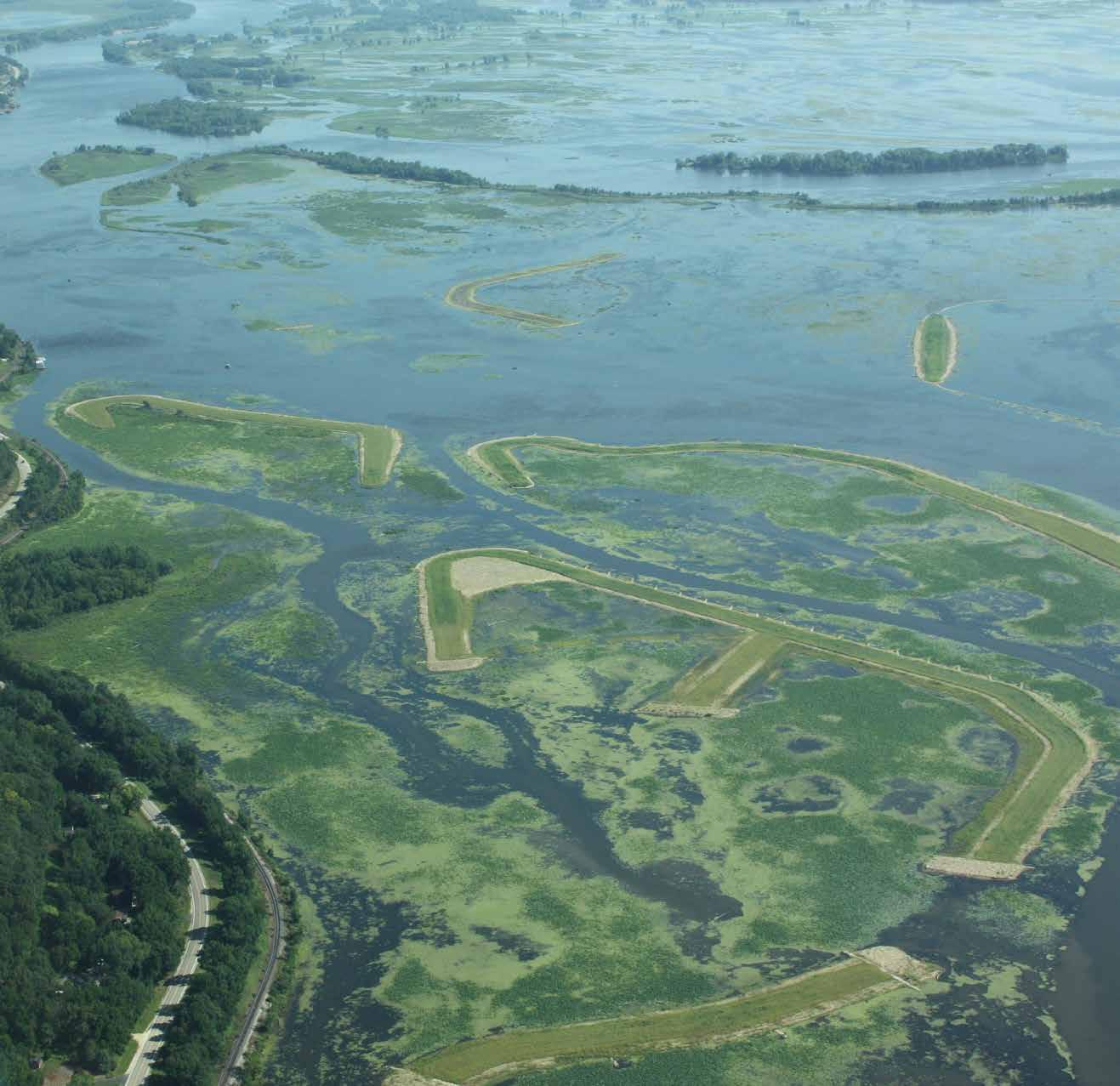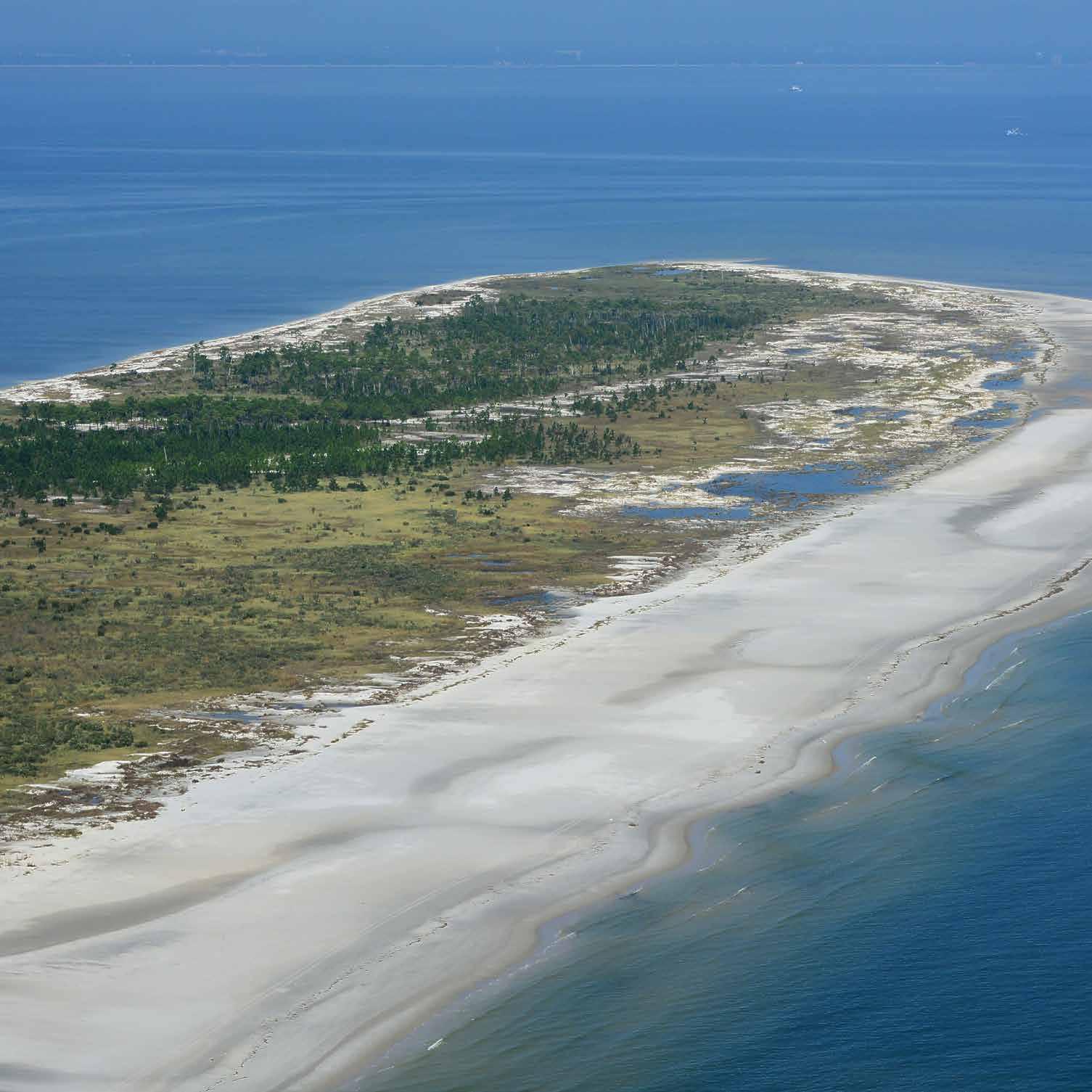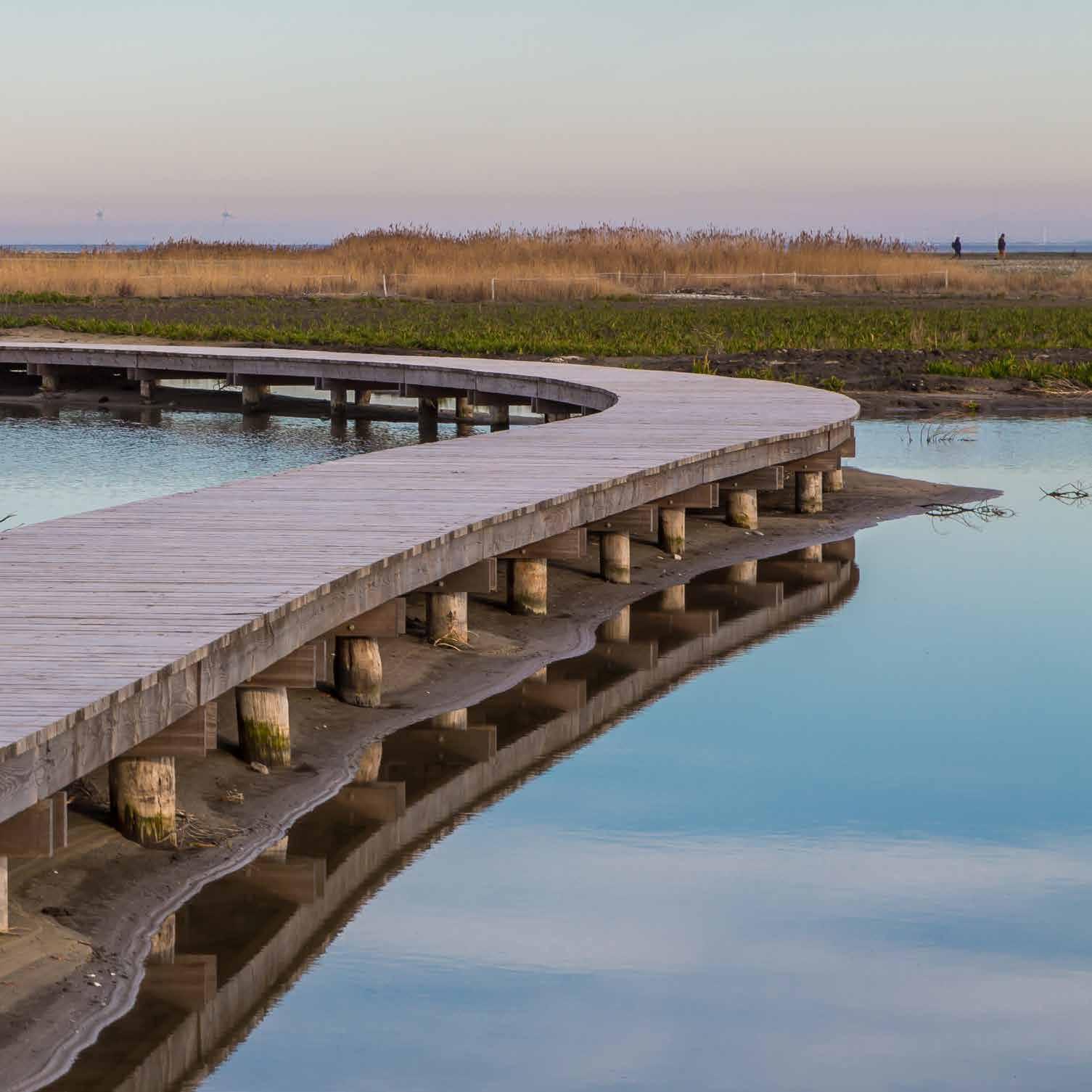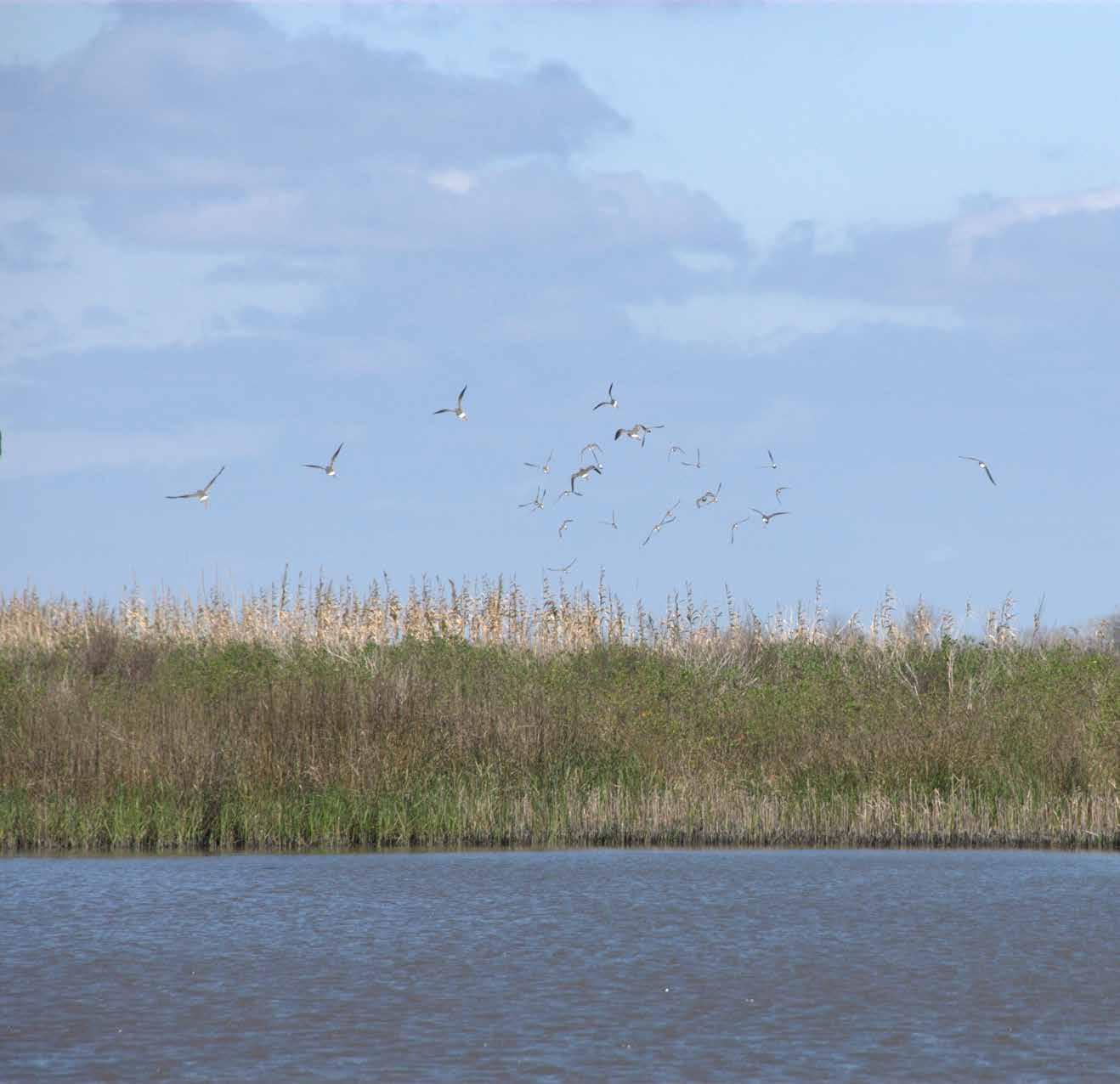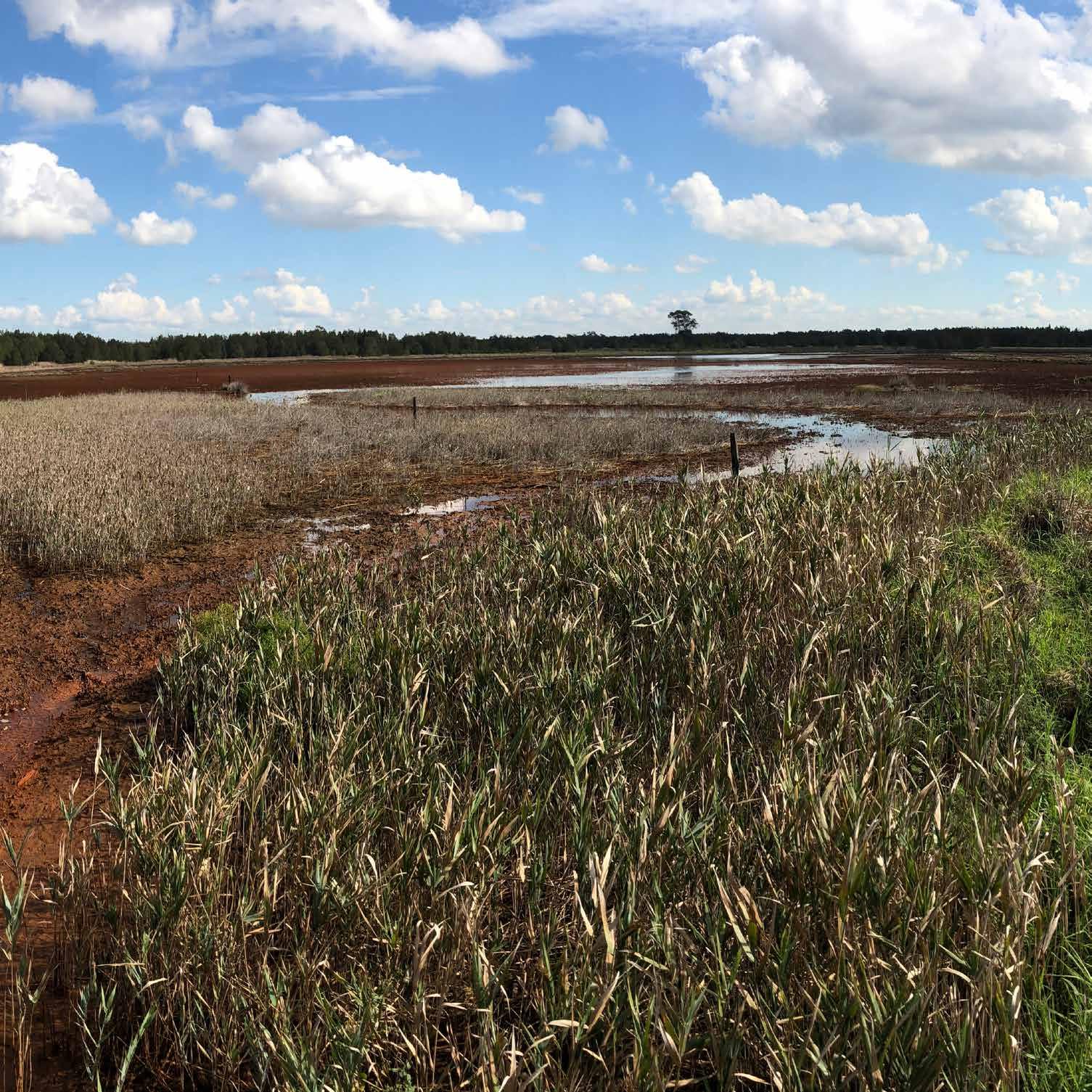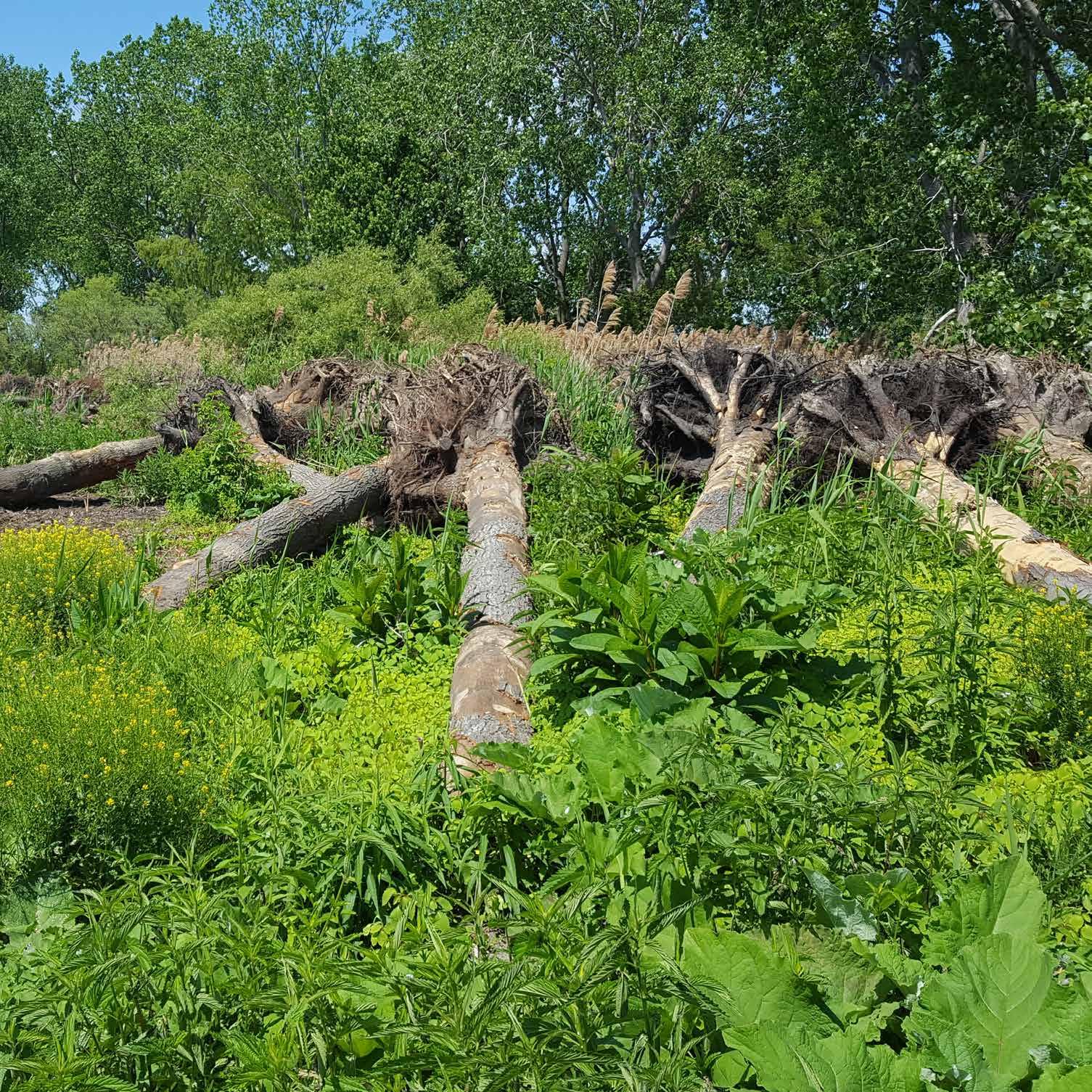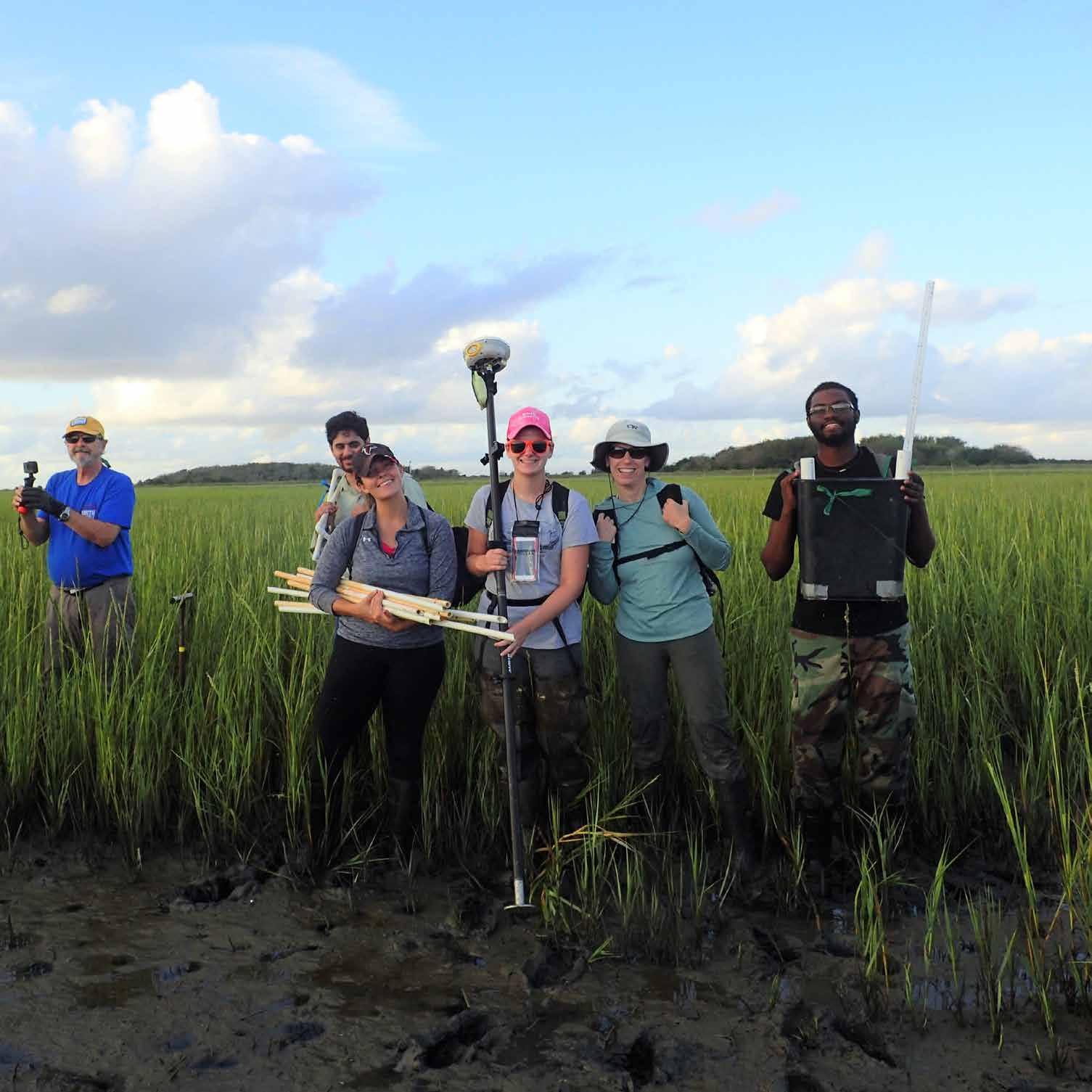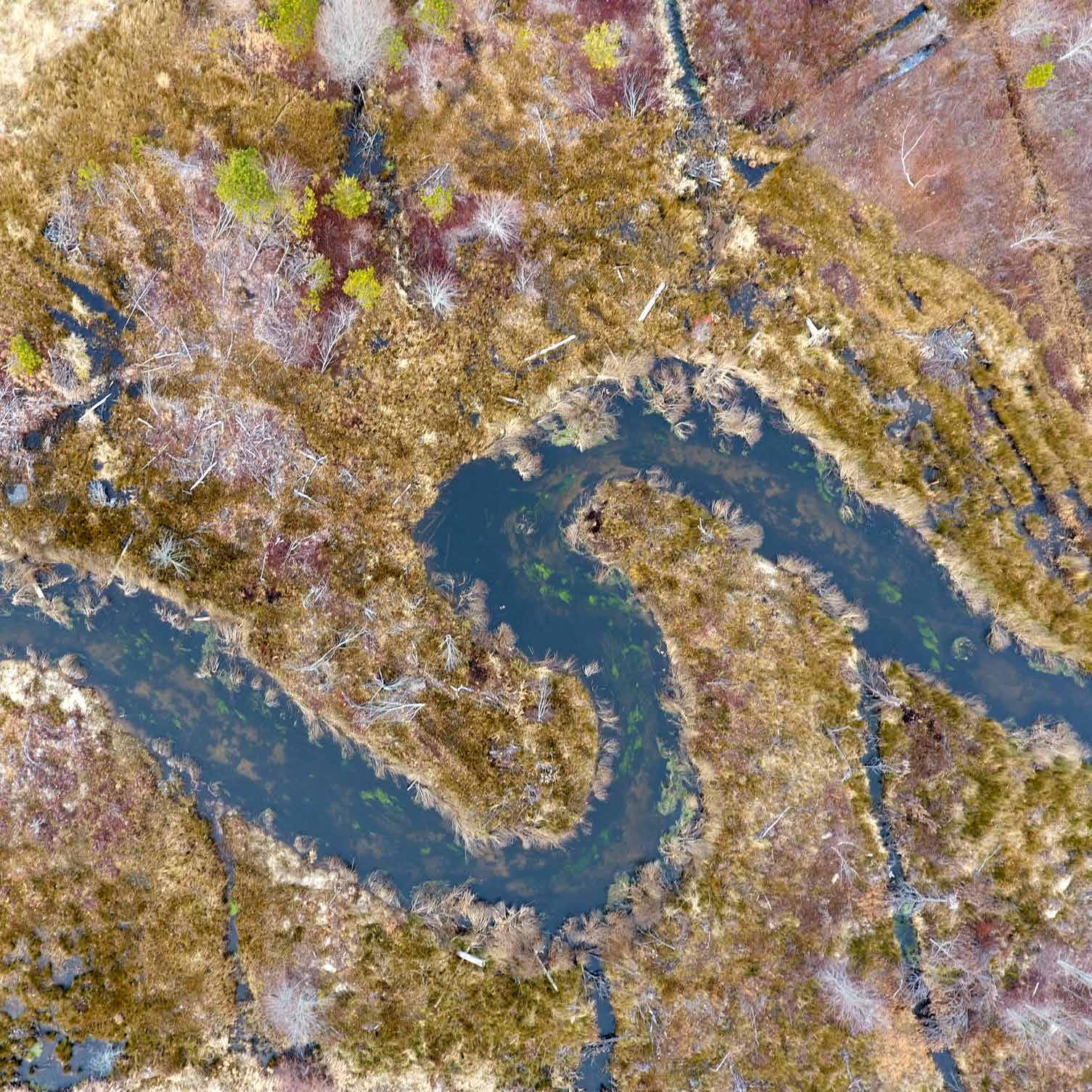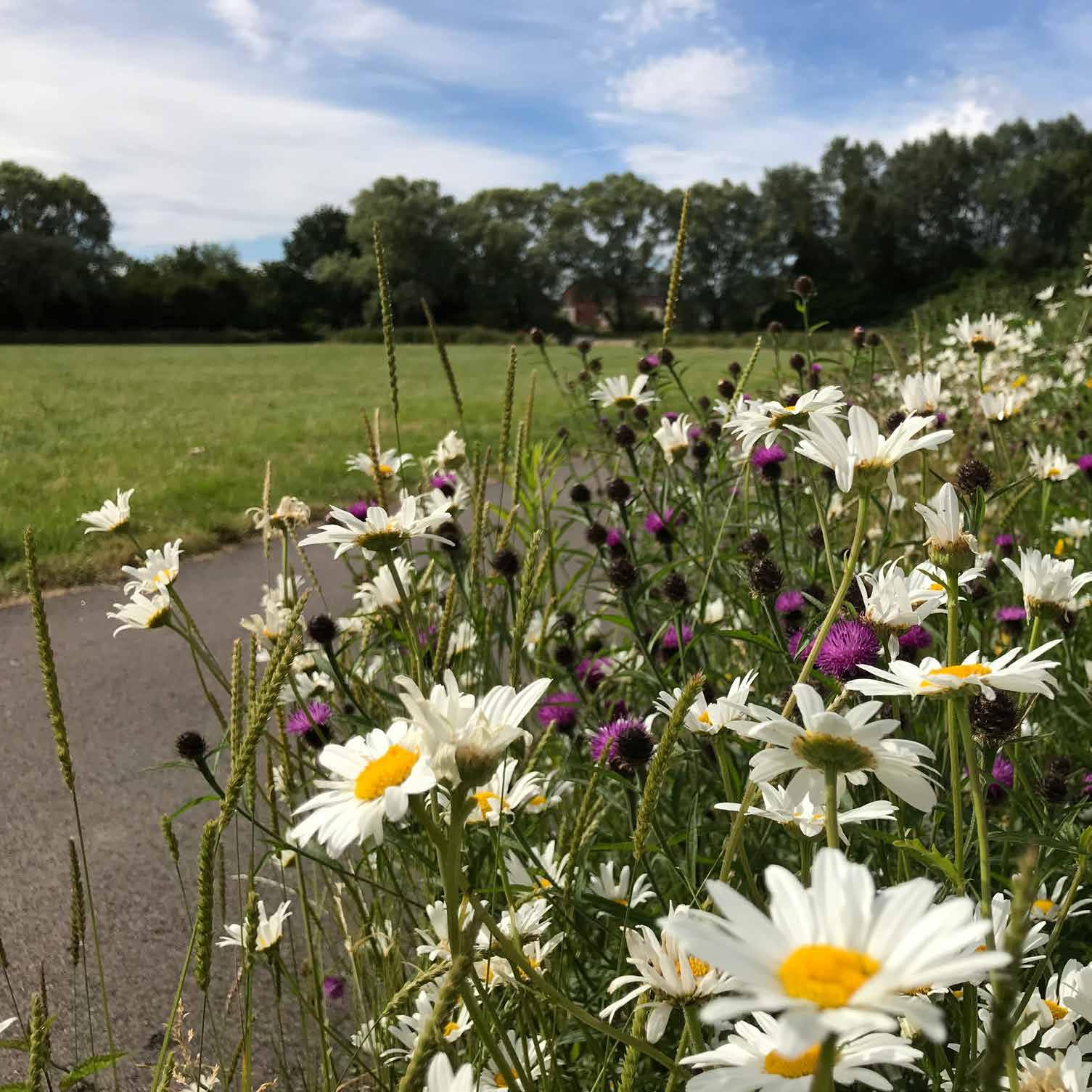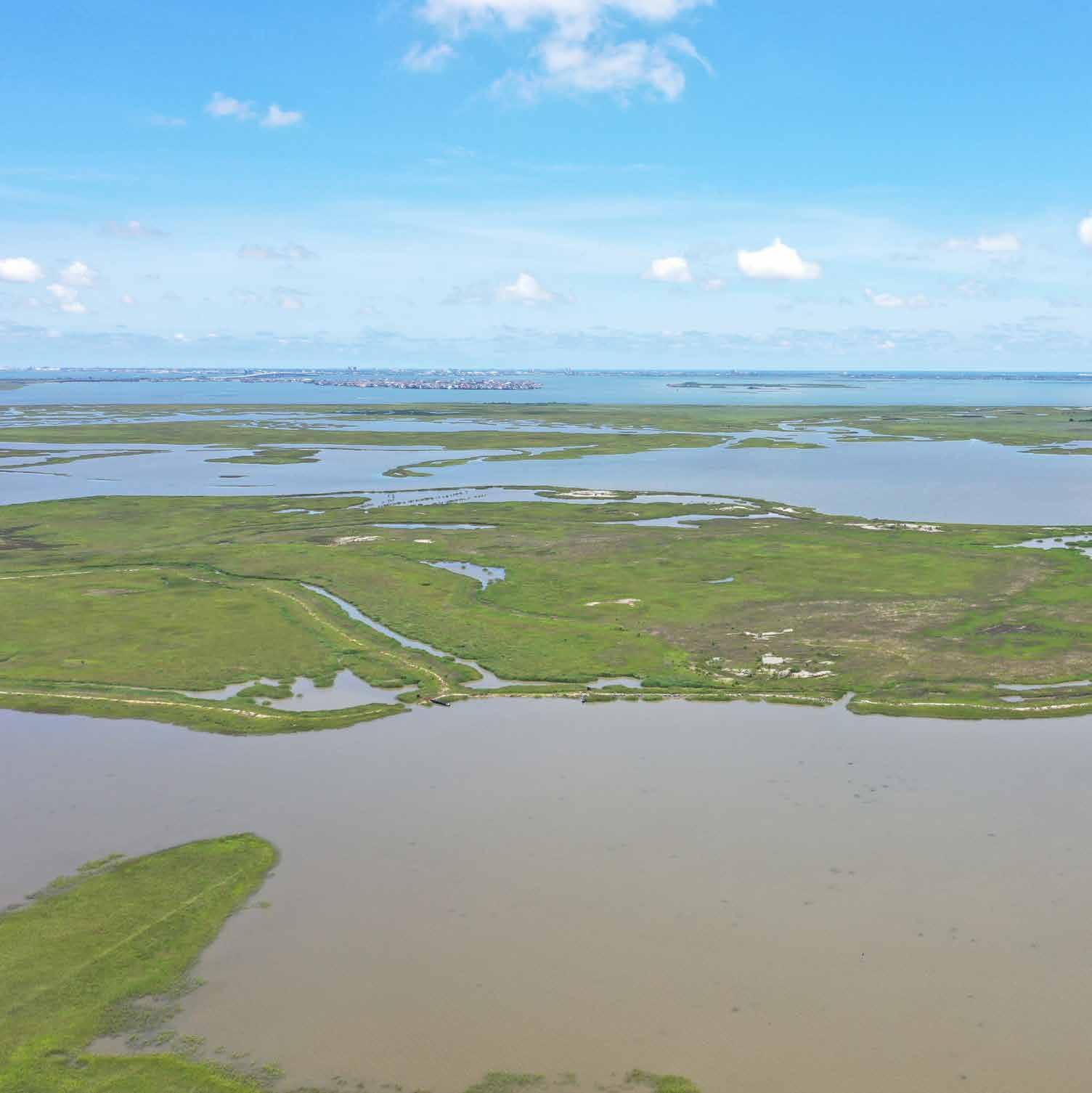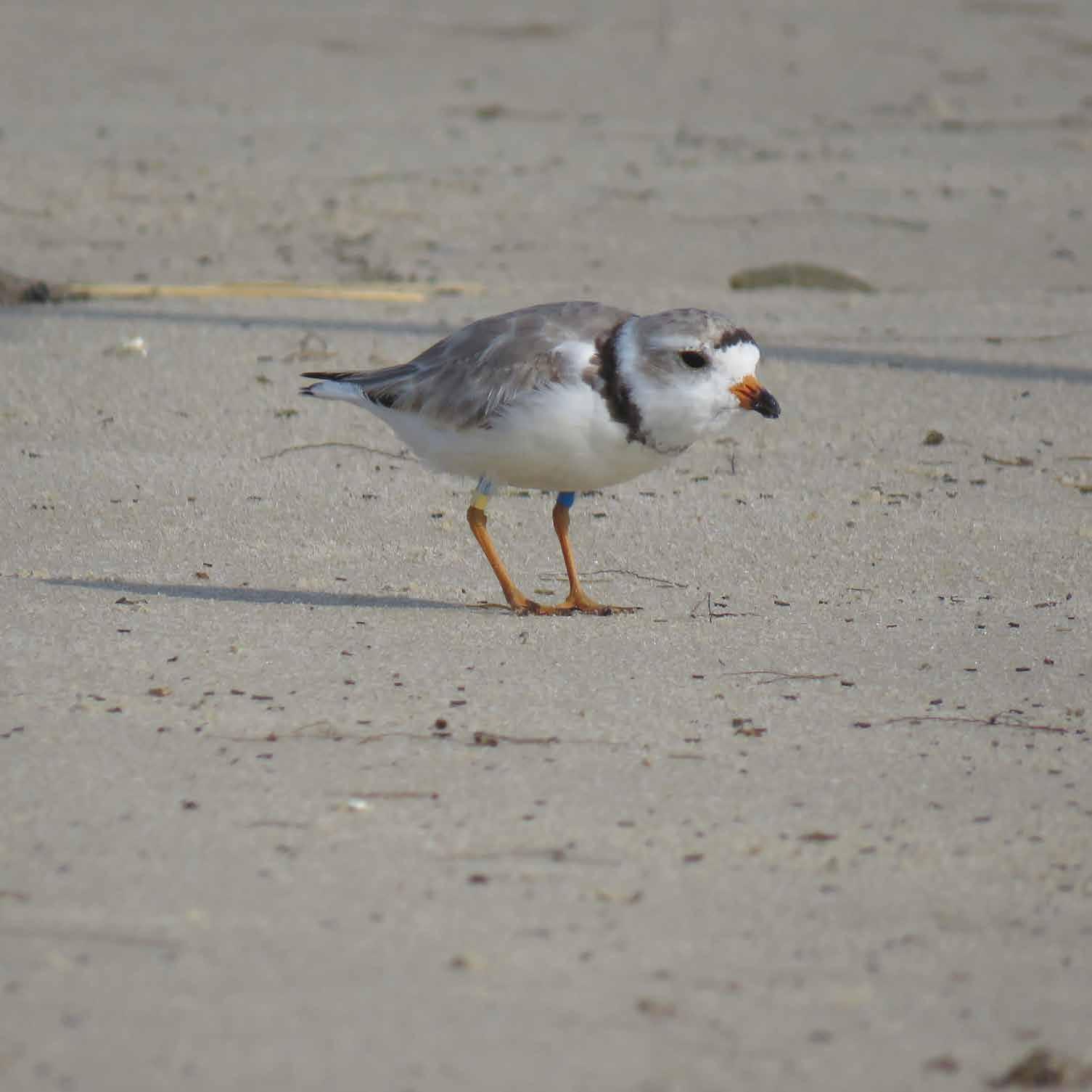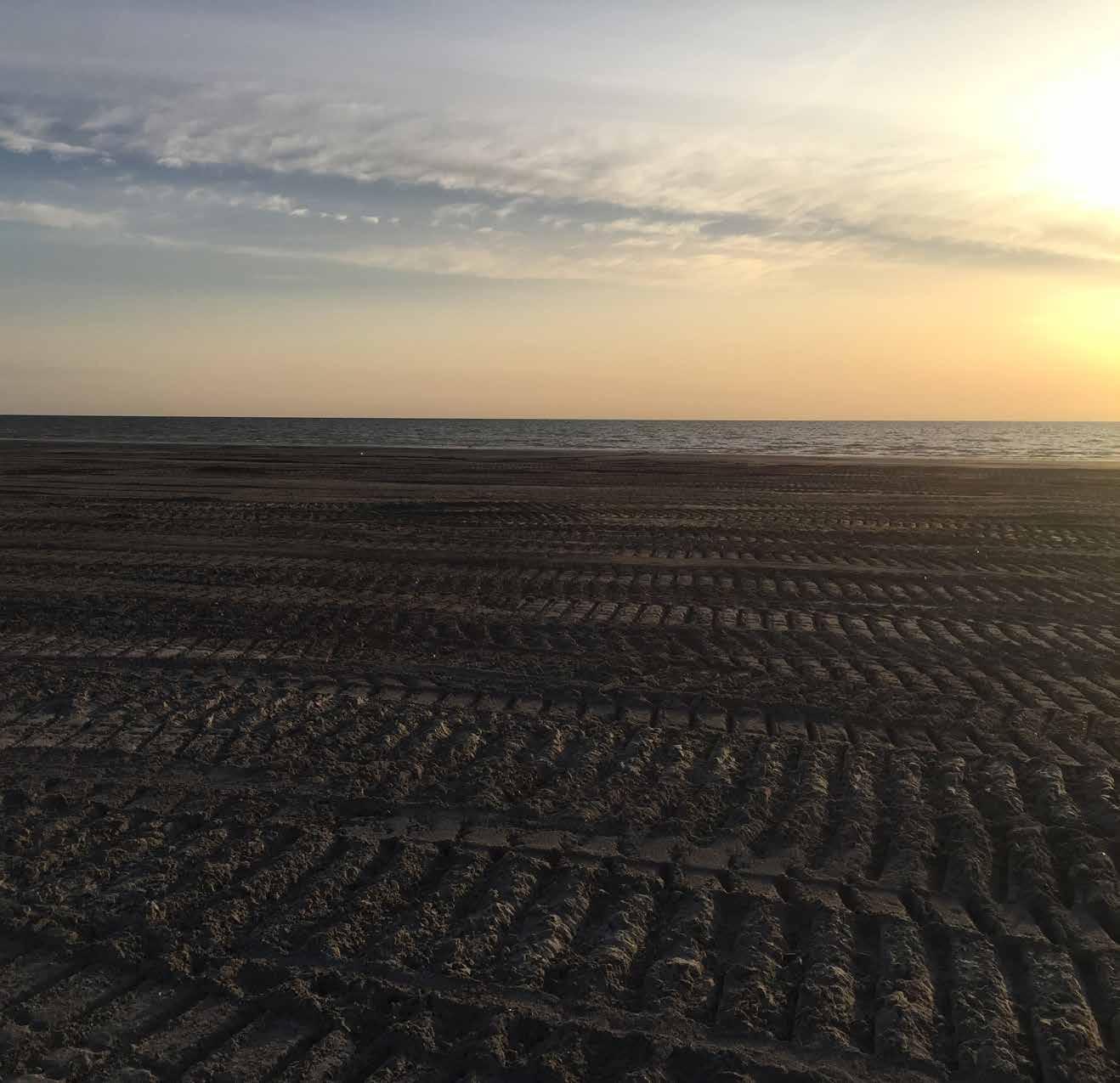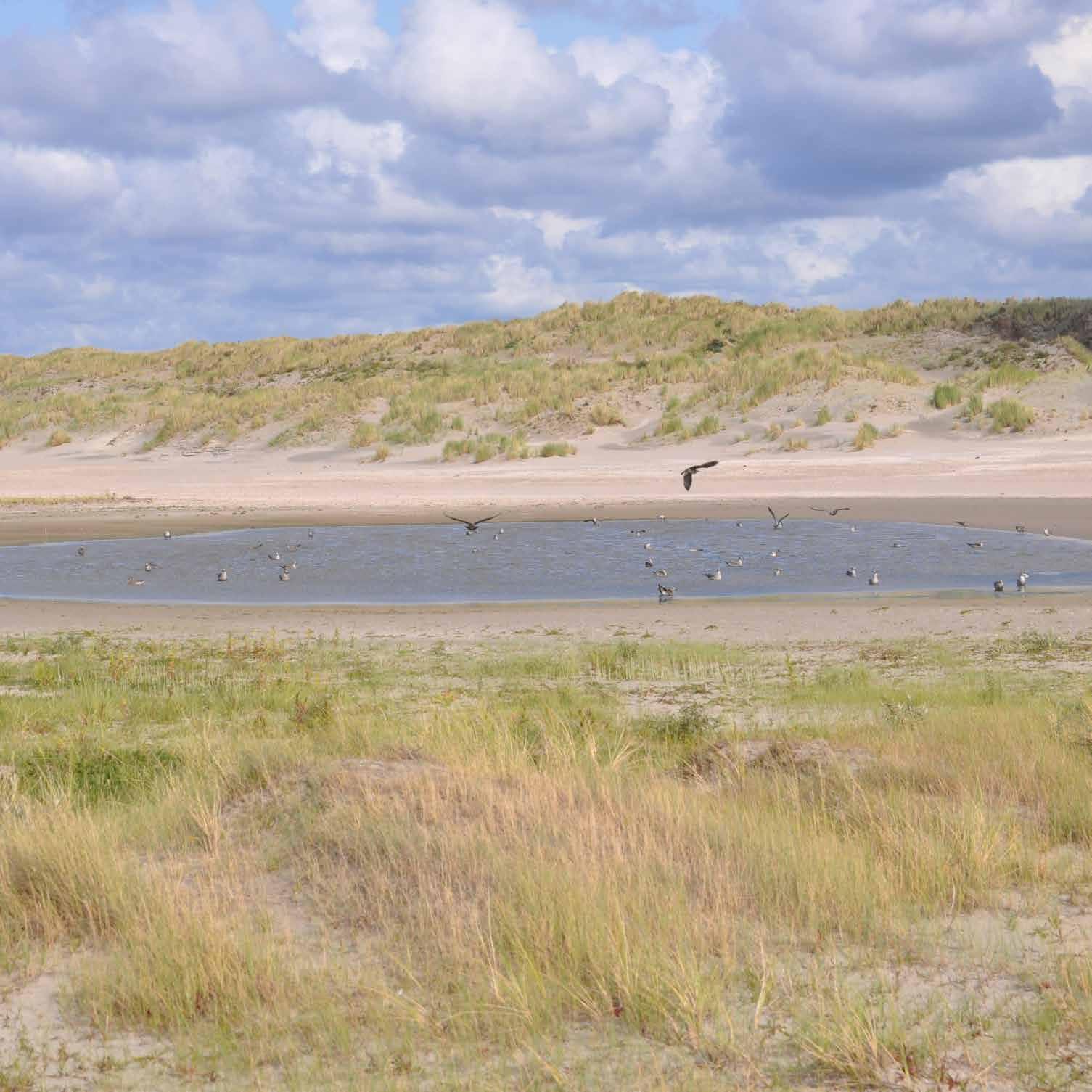Use of Vegetation and Natural Materials
Horsetail and Oneonta Creek Corbet, Oregon, United States
Restoring stream and floodplain habitat for migrating salmon. Between 1900 and 1960, land use transformed the Horsetail and Oneonta Creek floodplain, near the confluence with the Columbia River—conversion of a forested wetland to cattle pasture, construction of major transportation routes, the straightening and rerouting of creek channels through borrow ponds remaining from gravel mining activity. All of these changes were problematic for salmon. The cold water from the upstream watershed became too warm in the summer from a stagnant borrow pond; and stretches of the streams lacked shade, limiting its use as a cold-water refuge. Further, salmon could only reliably access the culvert running under the interstate during high water, typically spring. Finally, the straightened streams lacked suitable habitat, like fallen trees, where salmon could hide or rest. Therefore, in 2010, the Lower Columbia Estuary Partnership undertook restoring the streams and former floodplain, aiming to reduce thermal loading and to enhance the habitat quality. With construction complete in 2013, replanting and maintenance of established plants occurred over the next several years. The project is a model for implementing complex floodplain and stream restoration in a heavily impacted area.
232














